Vara asta am ajuns pentru prima oara la Oradea, nu mai fusesem niciodata pana acum, dar imi doream de cativa ani, mai ales de cand am inceput sa vad pe Instagram imagini superbe din oras.
Imi plac casele vechi, imi place sa le descopar detaliile de arhitectura, coloanele, decorurile sculptate in ziduri sau ornamentele ce le impodobesc, pe pereti sau pe acoperisuri. Cred ca pot sa scriu o mica poveste privind dantelaria din tabla a turlei unui acoperis sau usile vechi de lemn asezate frumos sub arcade suprinzatoare.
Adeseori, cand sunt coplesita de stress si simt ca ma sufoca spoiala si mercantilismul lumii glamorous, dorita si hulita deopotriva, ies la plimbare pe stradutele cu case vechi si frumoase. Ma relaxeaza, si admirandu-le, ma incarc cu energia fantastica si pozitiva a zidurilor vechi de peste o suta de ani, care, in aceasta lume adesea a formelor fara fond, sunt repere solide ale creativitatii, pasiunii, muncii, imaginatiei si priceperii celor ce le-au construit. Pasiunea se simte si ramane in eternitate.
Acestea fiind spuse, veti intelege de ce la Oradea am ales sa stau la un hotel incarcat de istorie si aflat in centrul vechi, si anume, la Astoria, care are aproape 115 ani si e orientat spre Piata Regele Ferdinand. Camerele sunt splendide si mari, cu mobilier si decor clasic, iar pretul, culmea, este mai mic decat la hoteluri cu stele mai putine si aflate in zone mai departe de centru, construite cu rigips si structuri de sticla precum niste office buildings. Mi-a placut si ca, fiind aproape de Piata Unirii, auzeam din camera Marsul lui Iancu, difuzat din Turnul Primariei, la fiecare ora fixa. Nu am luat mic dejun la hotel, tocmai pentru a incerca, in fiecare din cele 3 dimineti, o alta cafenea sau bistro din imprejurimi, aflate la cateva minute de mers pe jos. Am descoperit locuri cu decoruri ingenioase, cafea aromata si mancare buna.
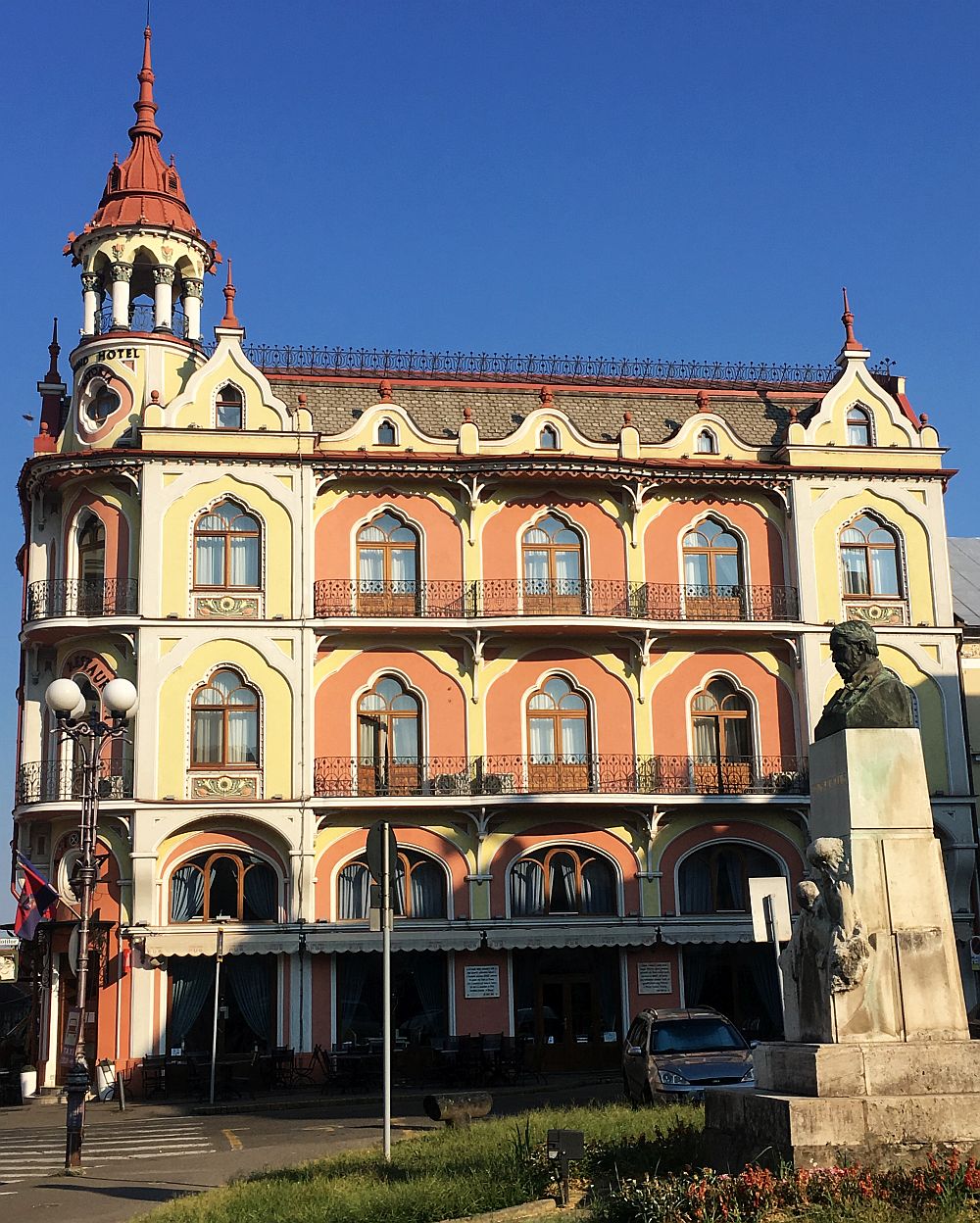
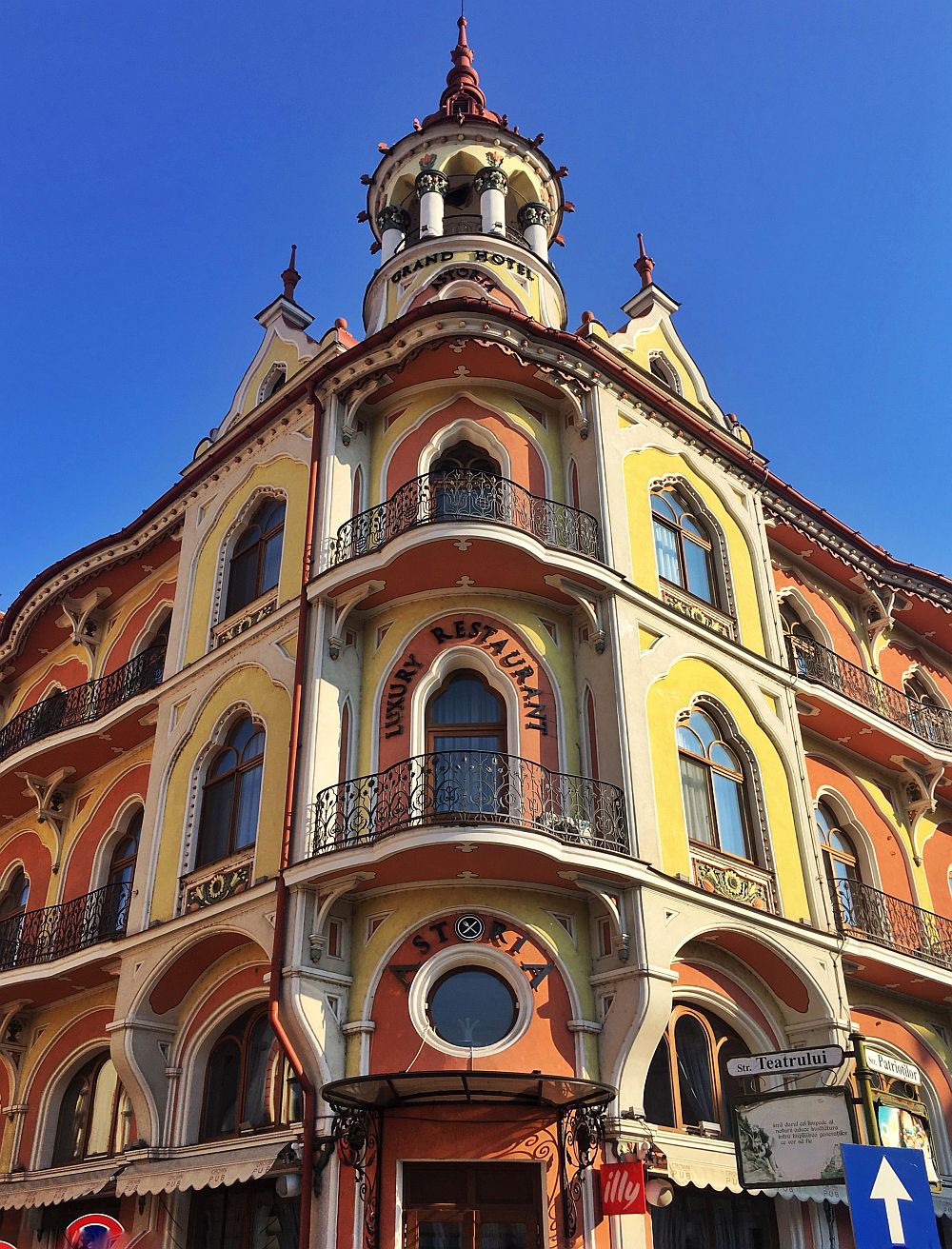


Casa Poynar – stil Secession, este in PIata Ferdinand, vizavi de teatru
Oradea este un oras-bijuterie, cu un peisaj architectural surprinzator, plin de cladiri cu fatade spectaculoase, in stil Art Nouveau, cu influente de Secession, baroc si eclectism, ce inconjoara spatii verzi si parcuri. Dupa primele 10 minute de mers prin centrul vechi, ma gandeam ca ar putea fi inscris cu brio in programa de la Facultatea de Arhitectura, ca stagiu de practica si design, prin mix-ul fantastic de influente stilistice extrem de armonioase pe care-l arata la fiecare pas. Dovada, includerea Oradei in reteaua internationala Art Nouveau, alaturi de Barcelona, Bruxelles, Nancy sau Viena, ceea ce-i certifica tezaurul architectural de valoare europeana.
Ansamblul arhitectural al centrului pietonal poate fi privit ca un sit istoric elocvent pentru bogăția informației artistice de la începutul secolului XX. Fațadele asociază elemente romantice, gotice, renascentiste, cu forme decorative de inspirație vegetală, zoomorfă sau antropomorfă. Coloane, console, ancadramente, altoreliefuri, brâuri în torsadă, capitele, balustrade, motive geometrice sau florale, alcătuiesc un decor somptuos specific stilului eclectic și Art Nouveau de pe la 1900.
Iata, in continuare, cateva repere importante pe care le-am descoperit in acest oras-muzeu architectonic in aer liber:
Teatrul Regina Maria – aflat in Piata Ferdinand, monument de arhitectură emblematica și unul dintre cele mai reușite exemple ale eclectismului orădean, a fost construit în perioada 1899-1900 de arhitectul Rimanóczy Kálmán Junior, dupa un proiect de Fellner și Helmer (Viena). Faţadele poartă amprenta neoclasicismului, cu elemente neorenascentiste, în timp ce interiorul este în stil neobaroc, ceea ce imprimă o ambianță intimă și liniștitoare. De remarcat si cele două statui alegorice din fața Teatrului, reprezentând Drama și Comedia.

Palatul Rimanoczy Senior – situat pe Strada Republicii, construit in 1905, reproduce, la scara restransa si intr-un mod original, simplificat, Palatul Cá D’Oro din Venetia. Cladirea are un partener inalt, doua etaje, un turn pe colt, ferestre ondulate si reuseste sa imbine armonios stilul eclectic cu influente de stil gotic-venețian.


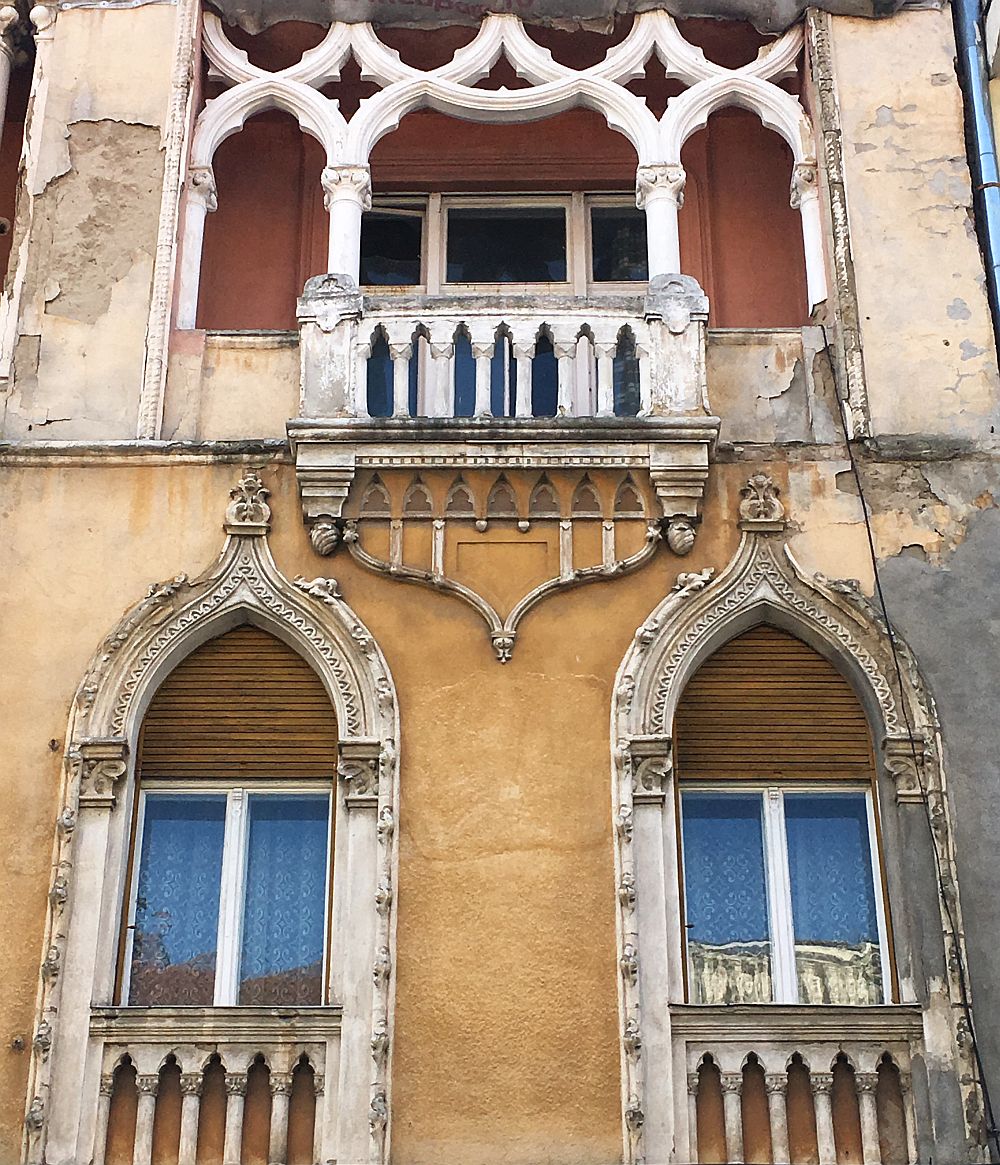
Palatul Stern – este tot pe Strada Republicii, in Centrul Vechi si dateaza din 1905, o cladire mare, din 3 laturi, situata pe colt, cu o fatada specifica stilului lechnerian. Este colorata ca o casa de turta dulce din povesti, motivele decorative fiind preluate din arta populară, de pe ţesături sau din decorul lăzilor pictate iar feroneria din golurile porţilor de lemn redă stilizat coada de păun.
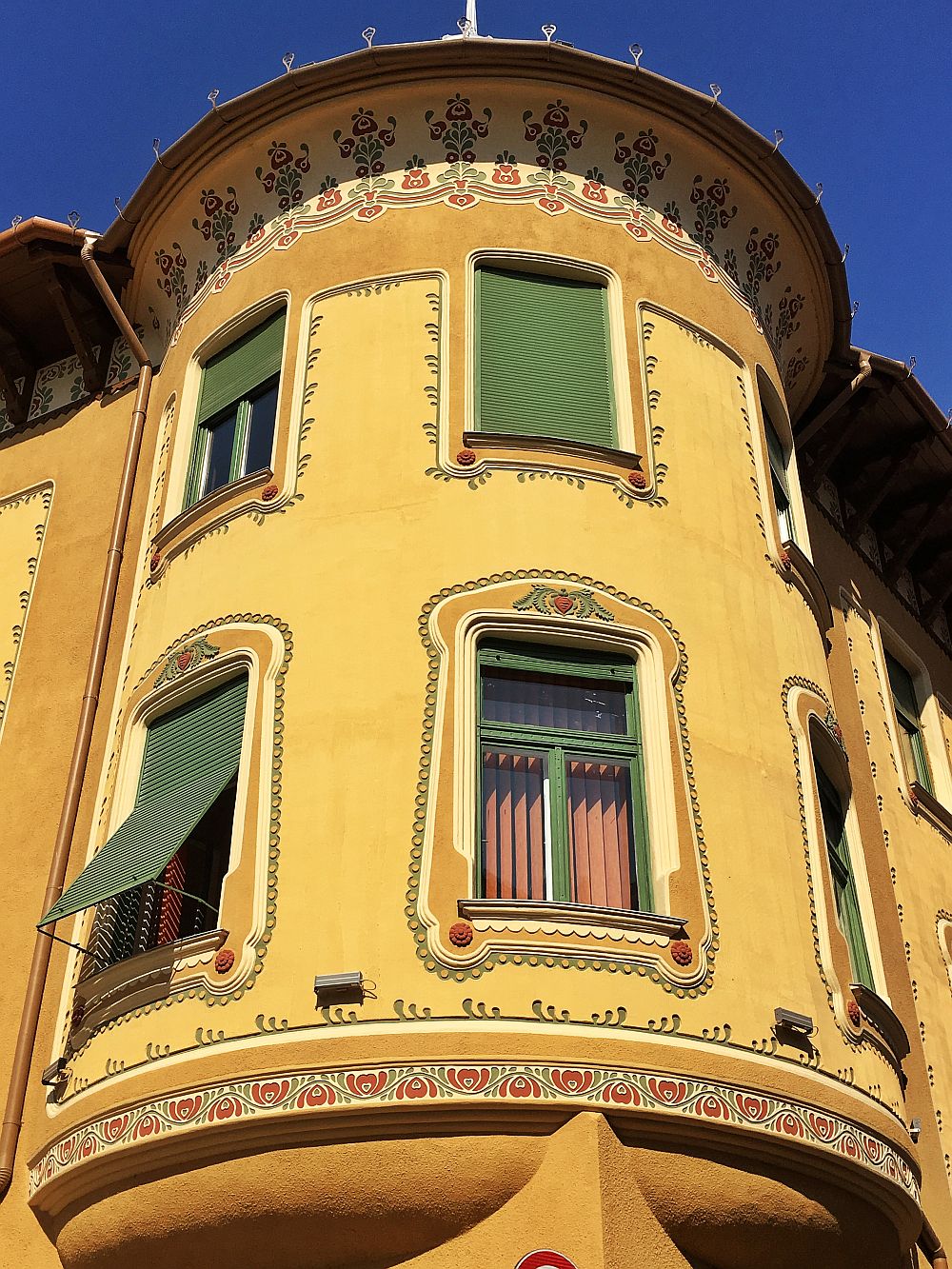



Palatul Moskovits Miksa– impunator si albastru, un reper absolut al centrului pietonal, este imposibil sa treaca neobservat si mai ales fara sa fie admirat indelung. Edificiul, de o frumusețe și complexitate debordantă, este unul dintre cele mai elocvente exemple ale stilului Secession, în diferitele maniere de expresie ale acestuia. Ornamentele vegetale creeaza o dantelarie aparte, motivul central al absidei (nisa centrala semicirculara) fiind un chip feminin, o zeiță ce-și ridică cu grație capul dintr-un hățiș de ramuri, frunze și flori.
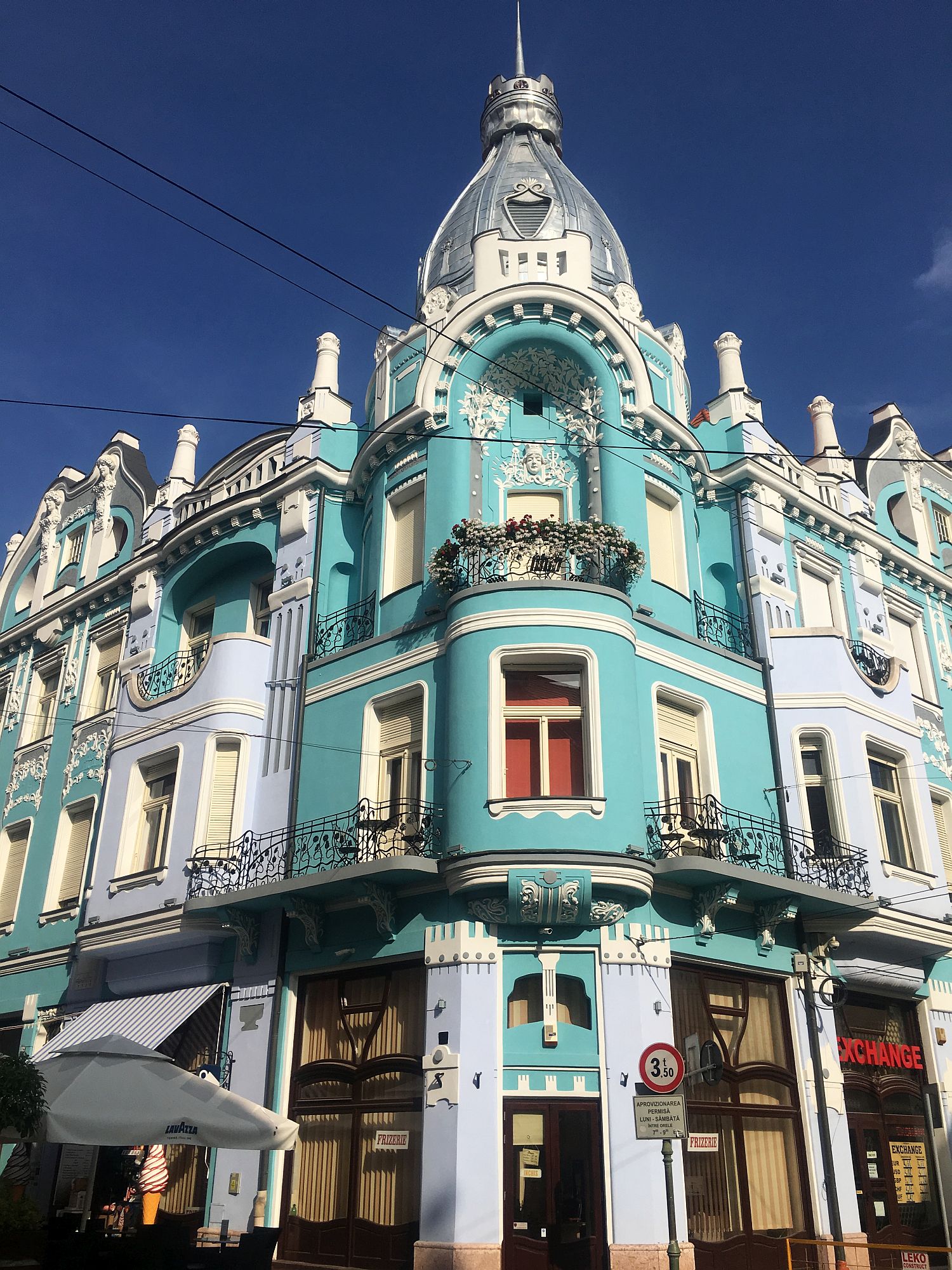
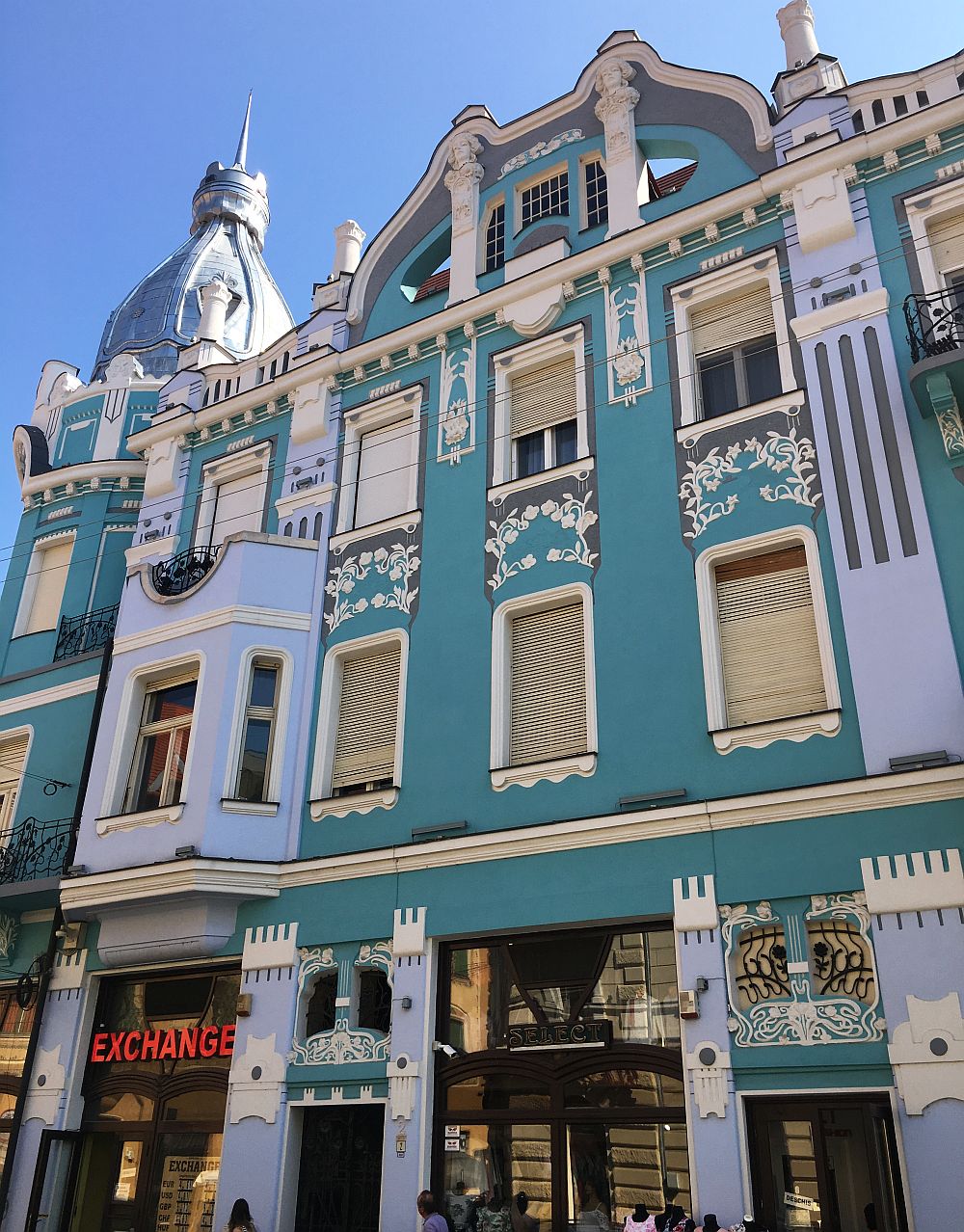
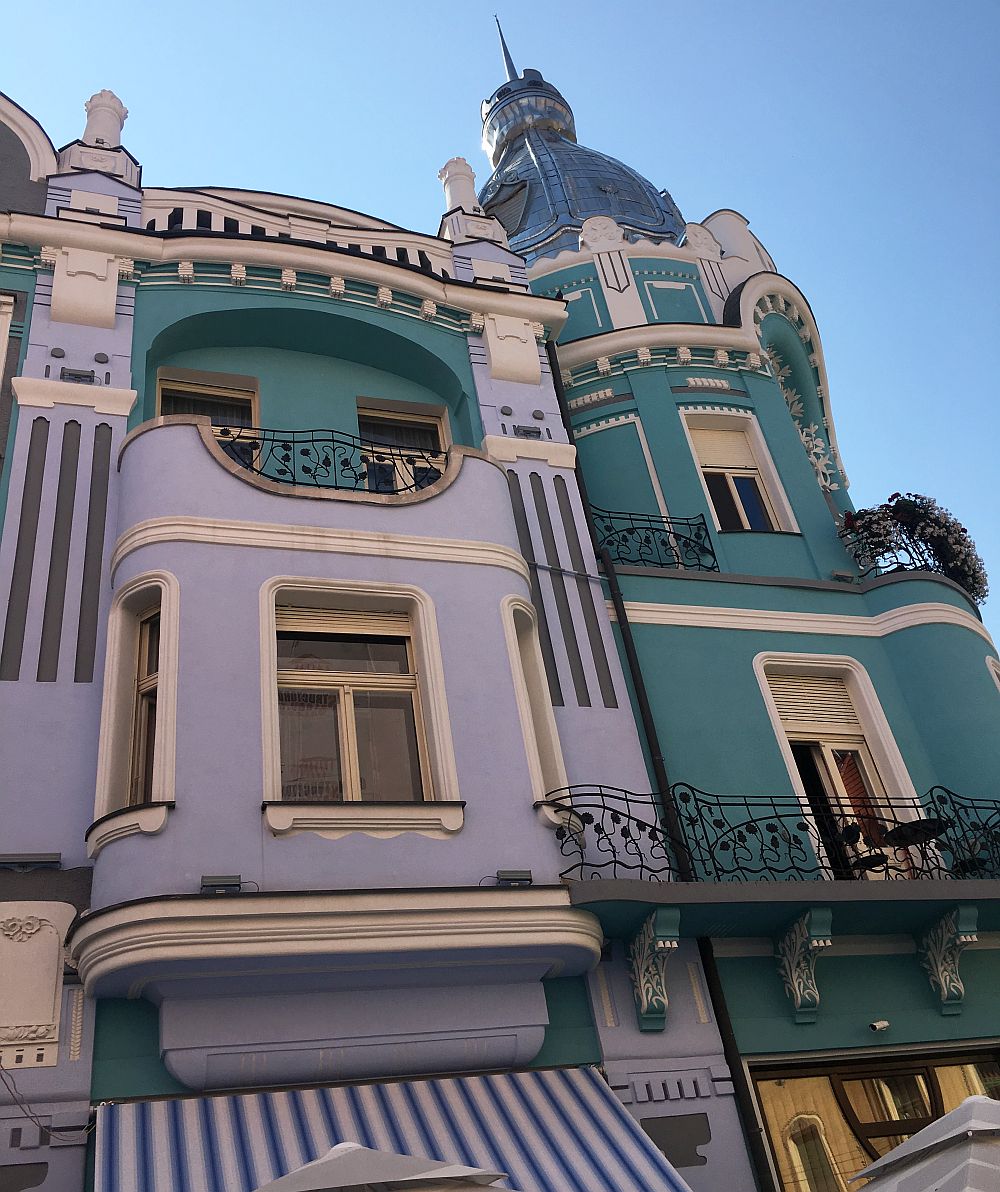

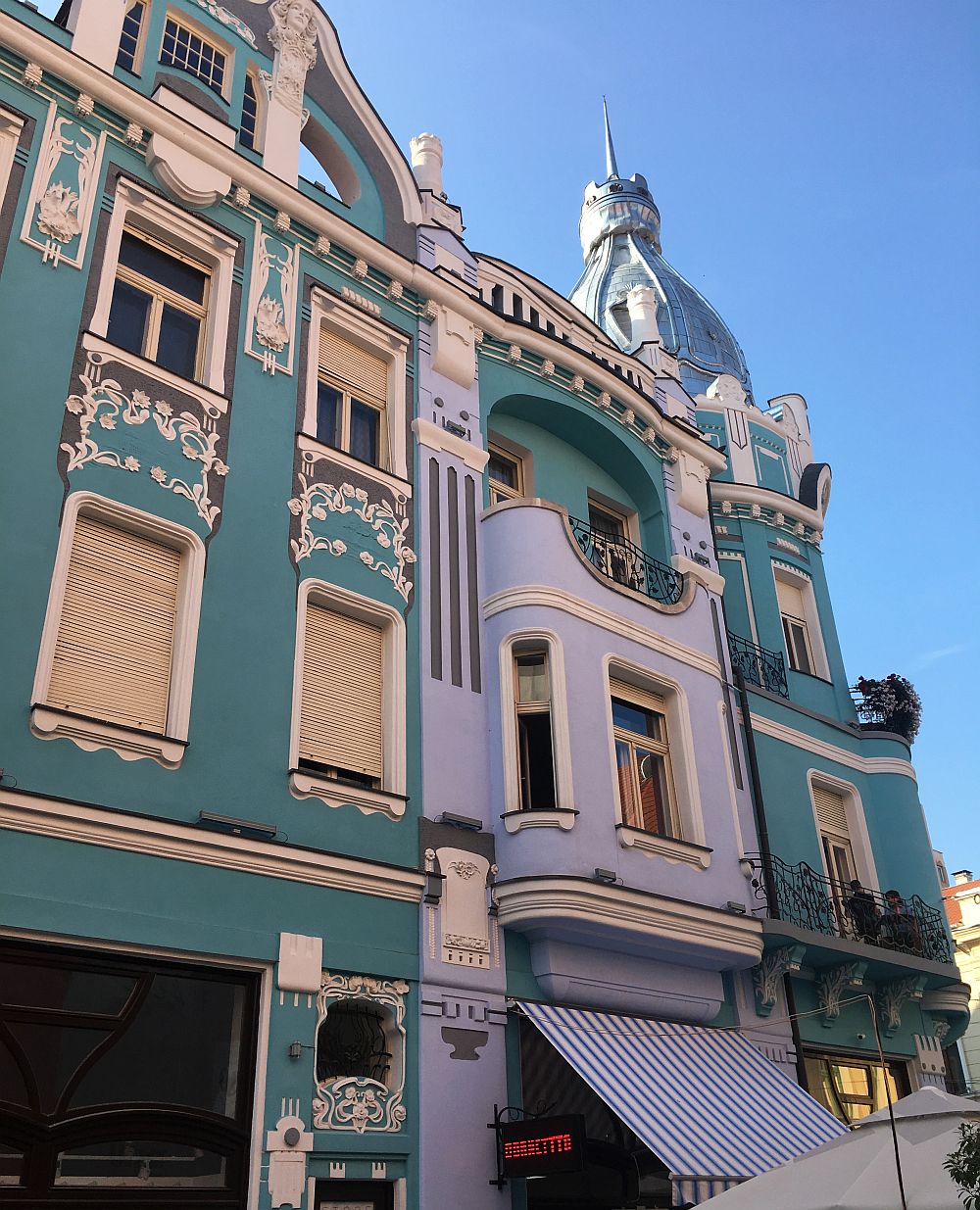
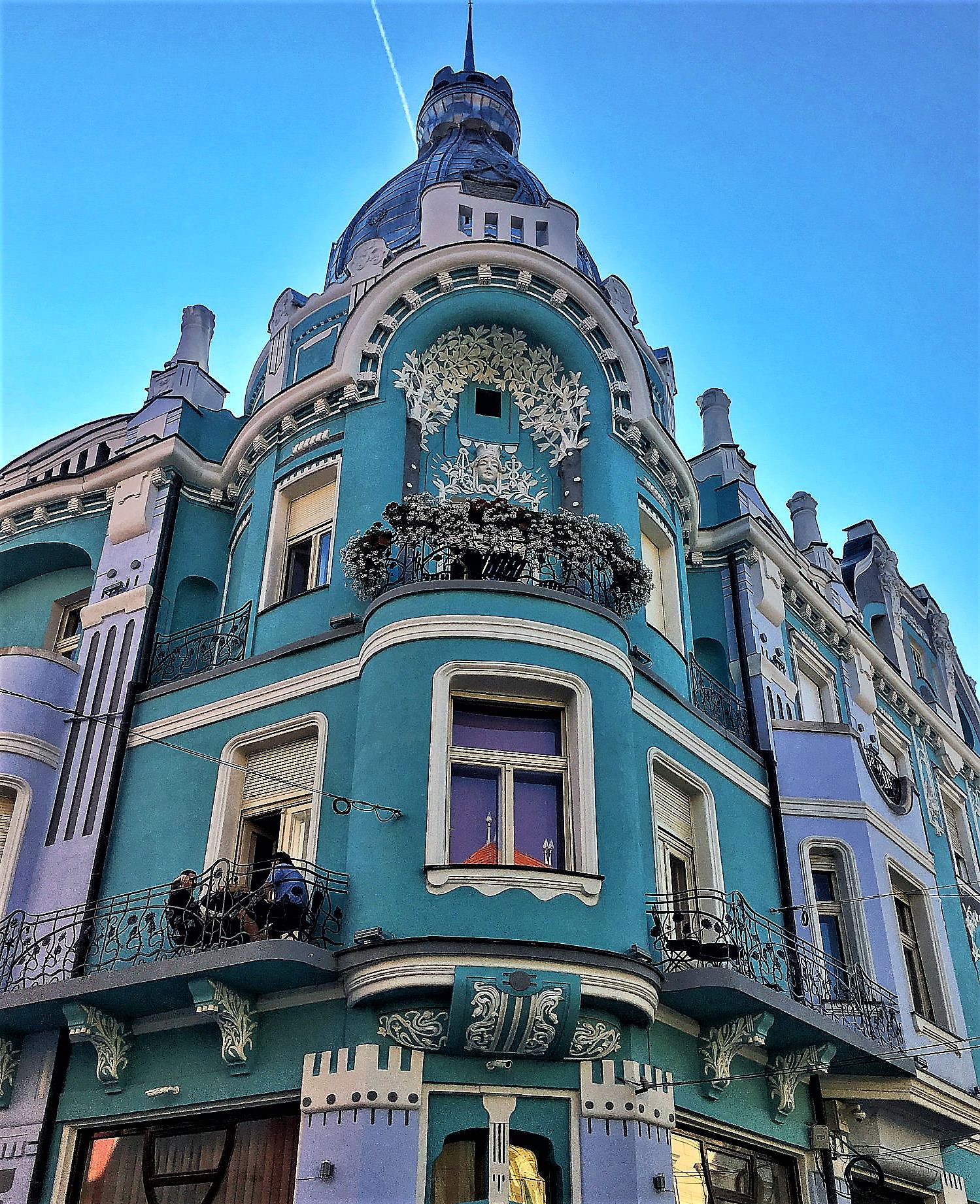
Biserica Romano-Catolica “Sfantul Duh” – are arhitectura in stil baroc, fiind o fosta manastire a calugarilor franciscani din 1787, consolidata si reconstruita de-a lungul vremii, unul dintre elemente marcante adaugate fiind turnul inalt de 53 metri. Cladirea este superba si e inconjurata de o gradina cu vegetatie luxurianta, din care, pe latura dinspre strada Republicii se zareste o statuie Pieta. Combinatia de arhitectura si vegetatie bogata de aici mi se pare absolut splendida si inedita.
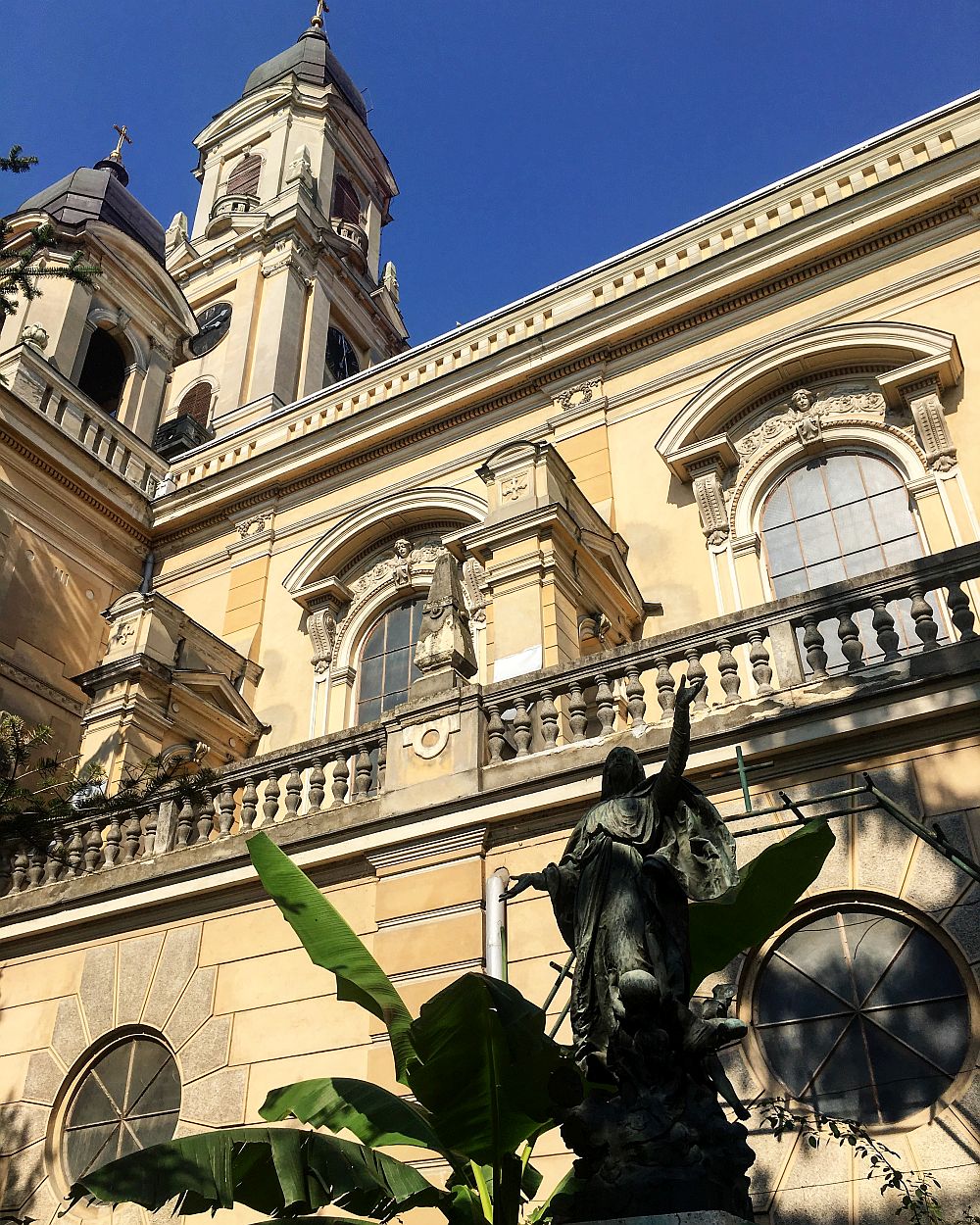
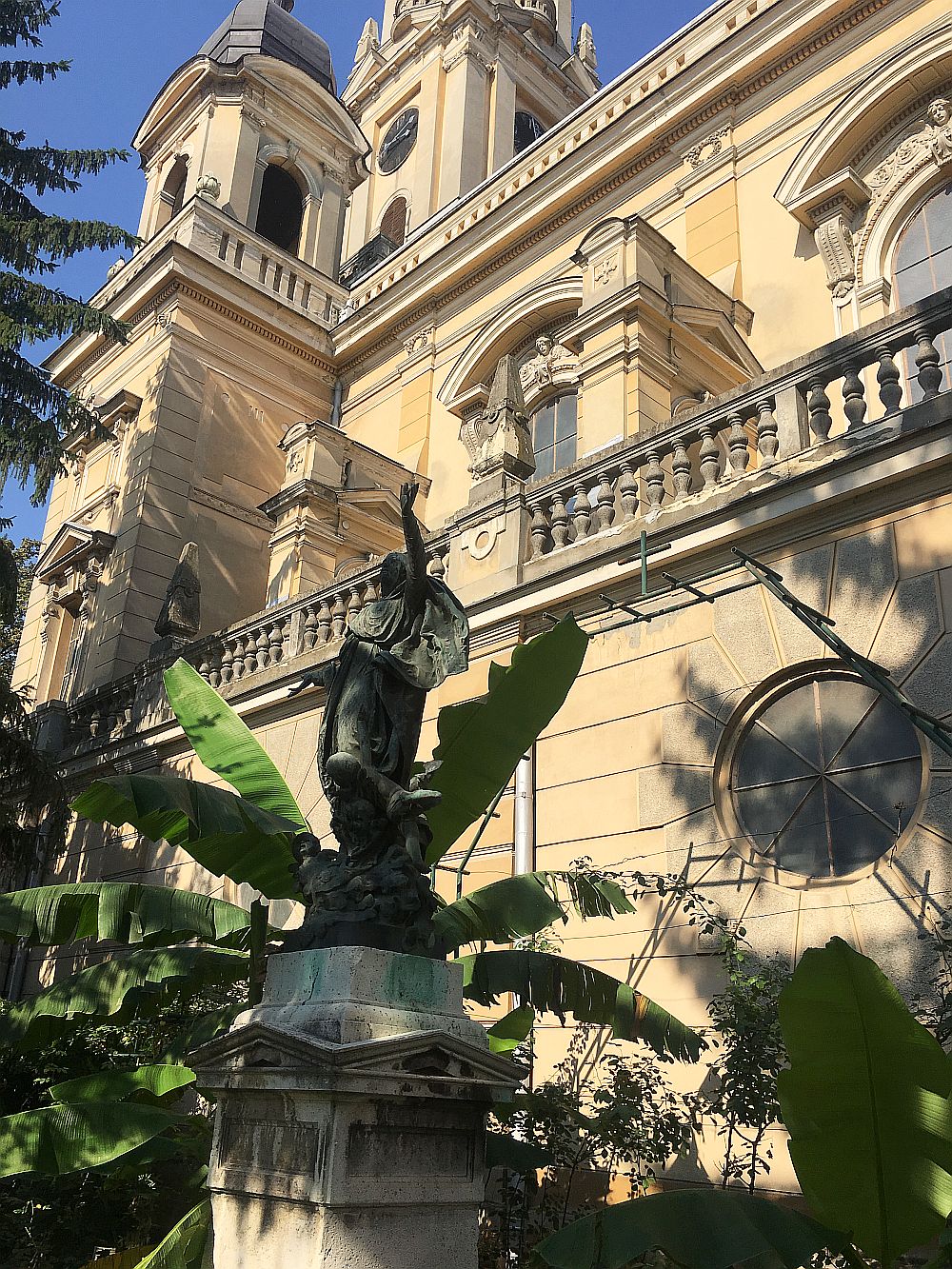
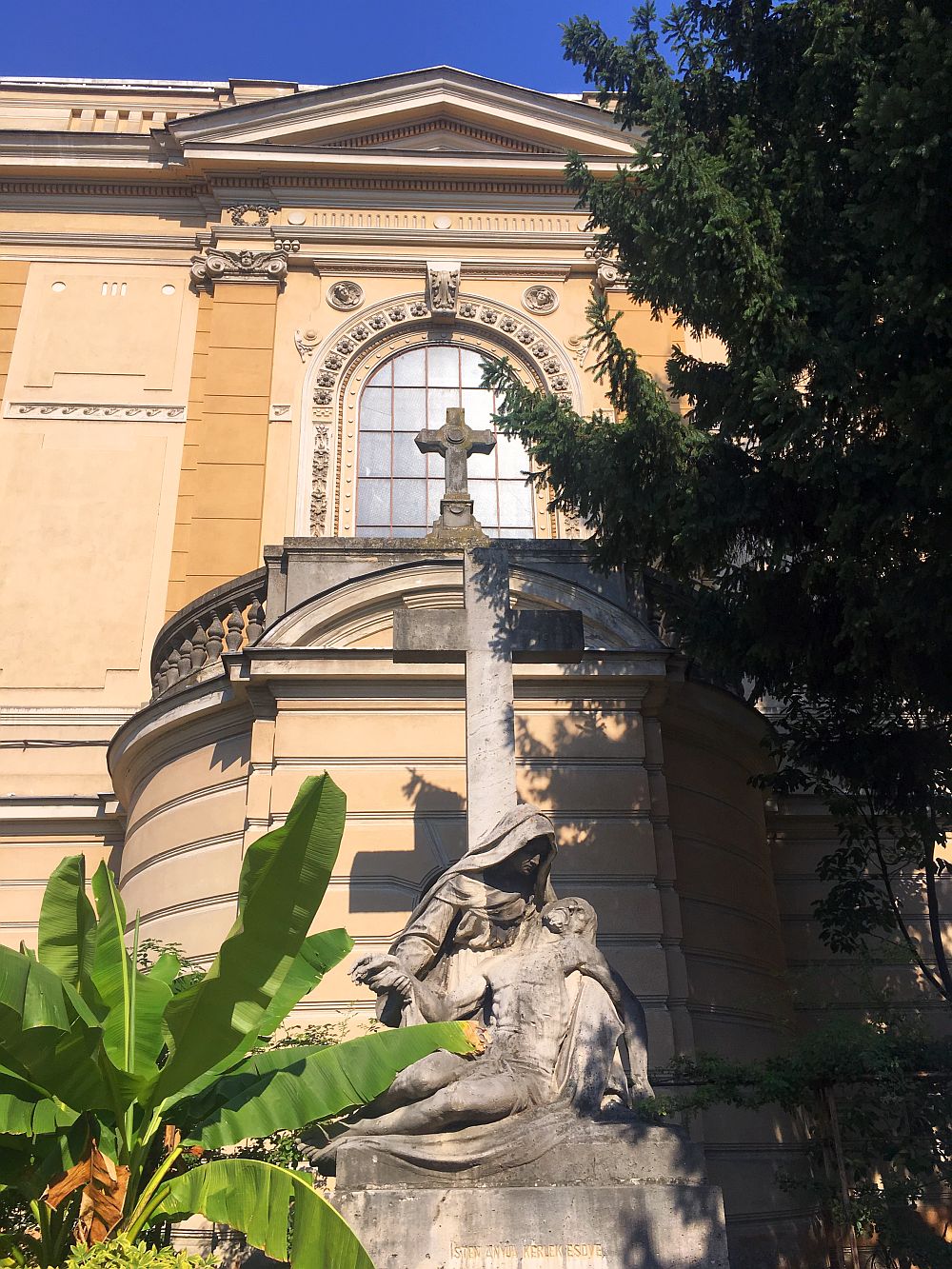
Casa Adorjan I – aflata in spatele teatrului, pe o straduta laterala, m-a dus imediat cu gandul la Gaudi, prin liniile ondulate ale fatadei, desi apartine aceluiasi stil Secession, completat insa cu multe detalii ornamentale, unele de inspiratie populara. Construita in 1903, este acum monument istoric.
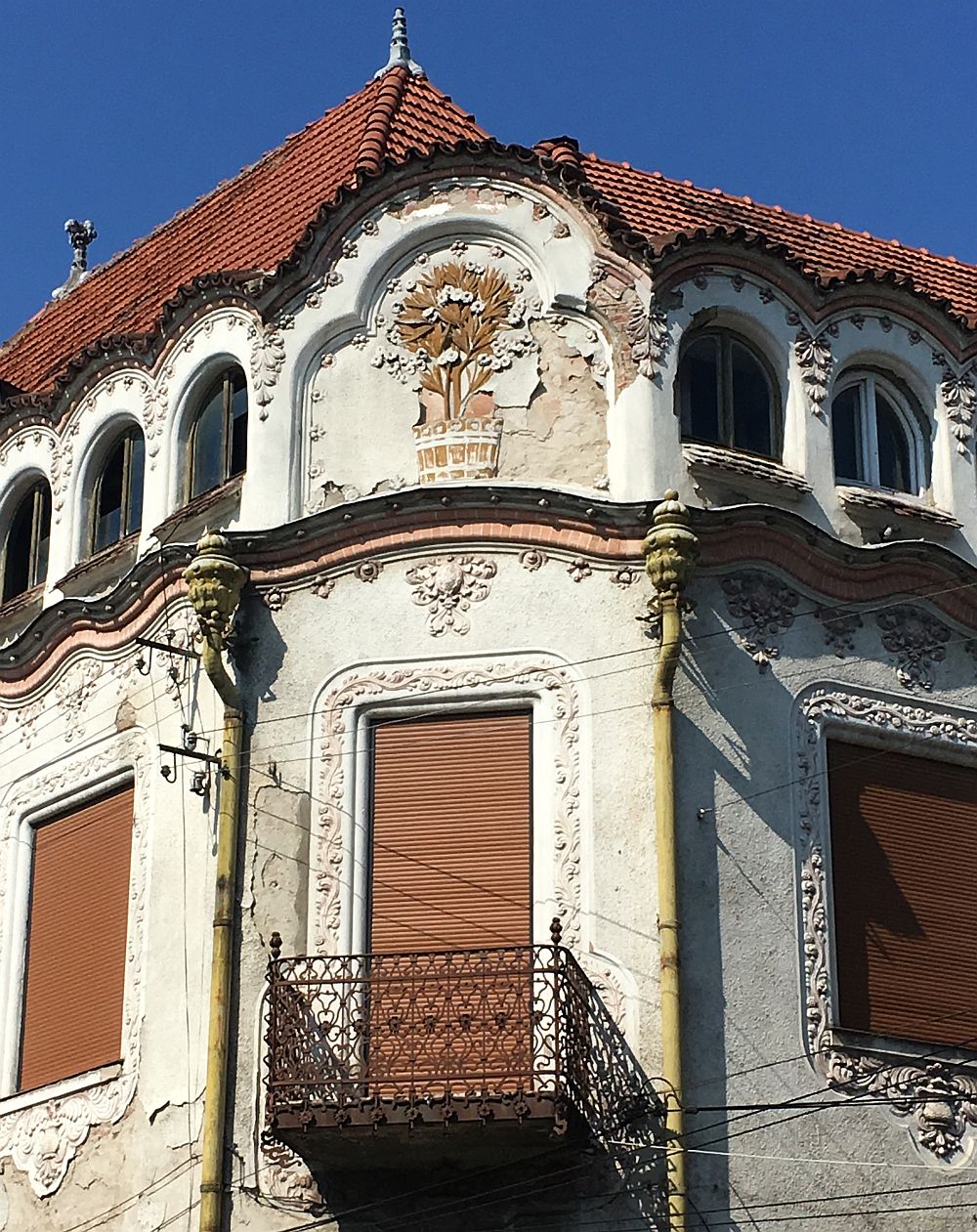

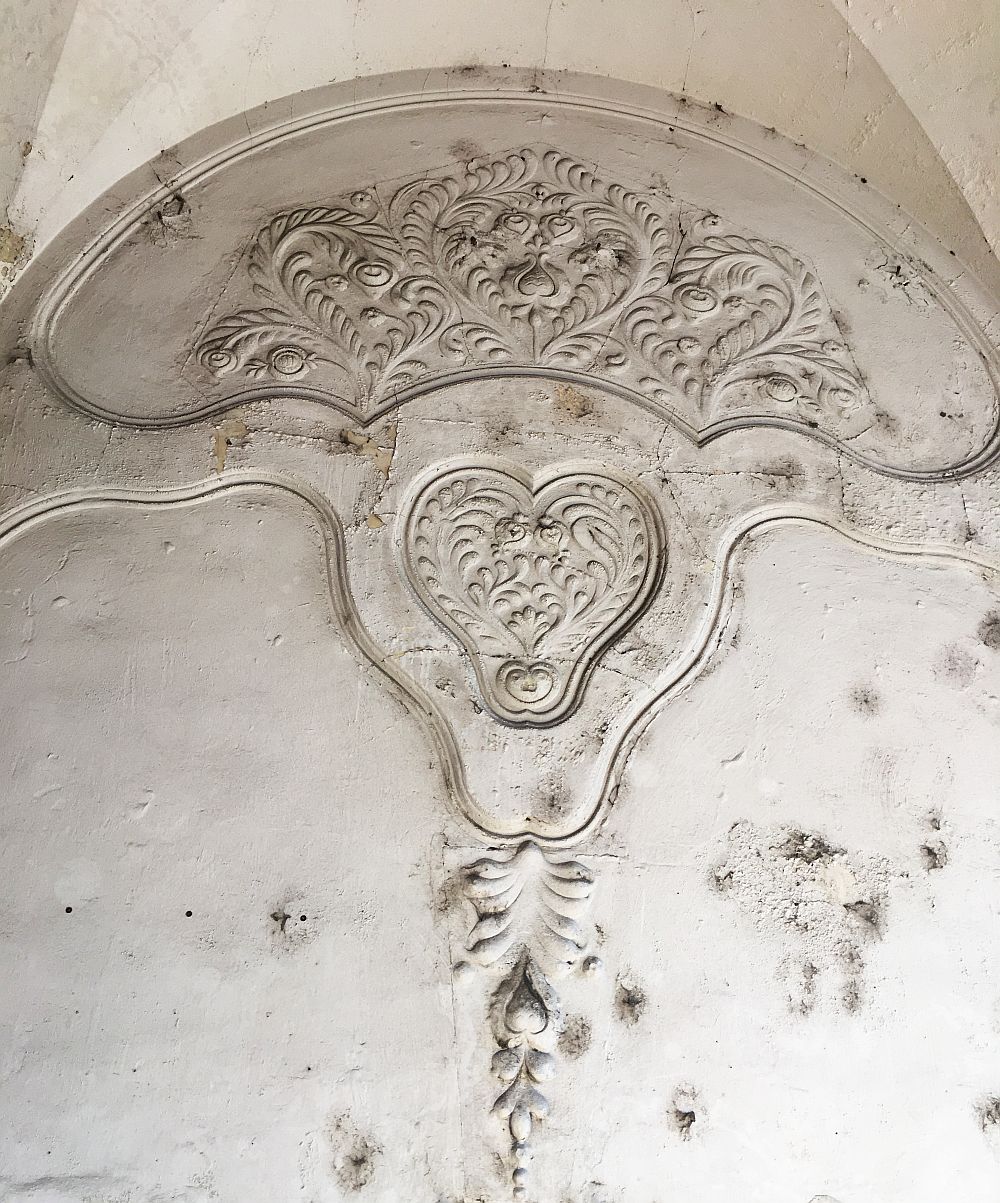

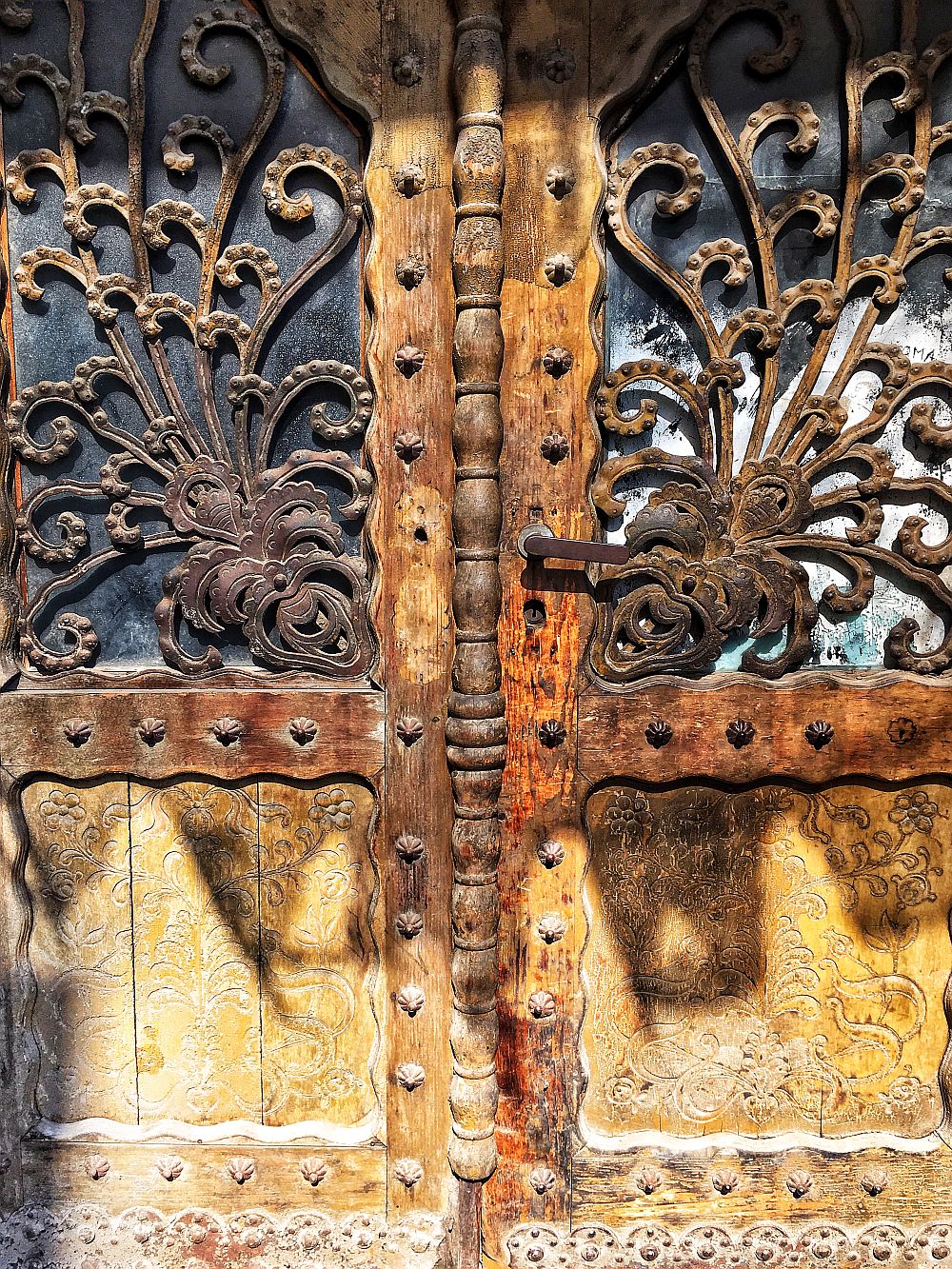
Palatul Vulturul Negru – este in Piata Unirii, monumental si foarte reprezentativ pentru stilul architectonic Secession, are un pasaj interior în formă de Y şi 3 intrari. Avalanşa ameţitoare de linii curbe, alternanţa de stucaturi-basoreliefuri cu motive florale şi figurative, vitraliile şi imensele candelabre sunt organizate compoziţional extrem de simetric. Construit in 1907, complexul urma să adăpostească un teatru, cateva săli de bal, un cazinou, cafenele si birouri.
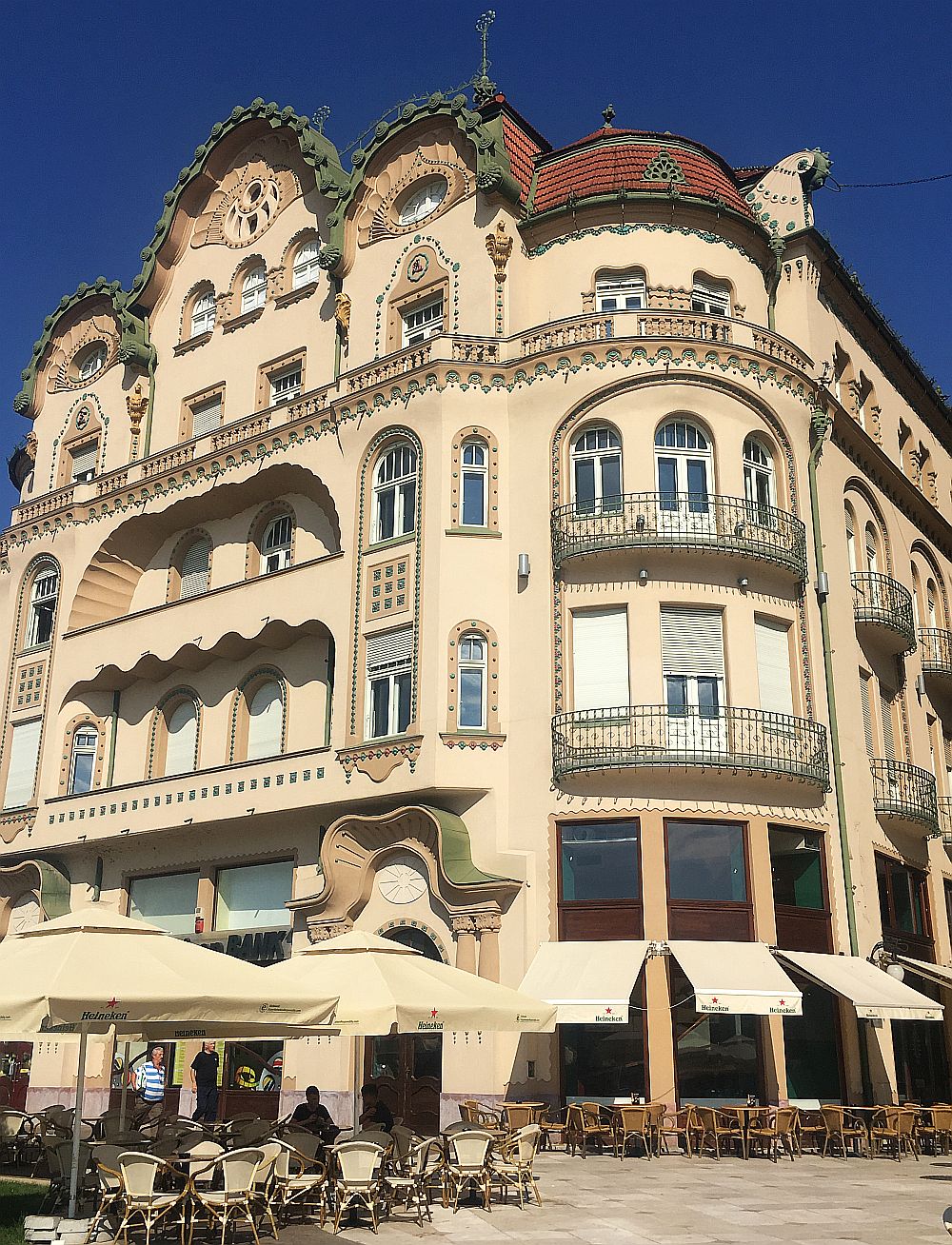

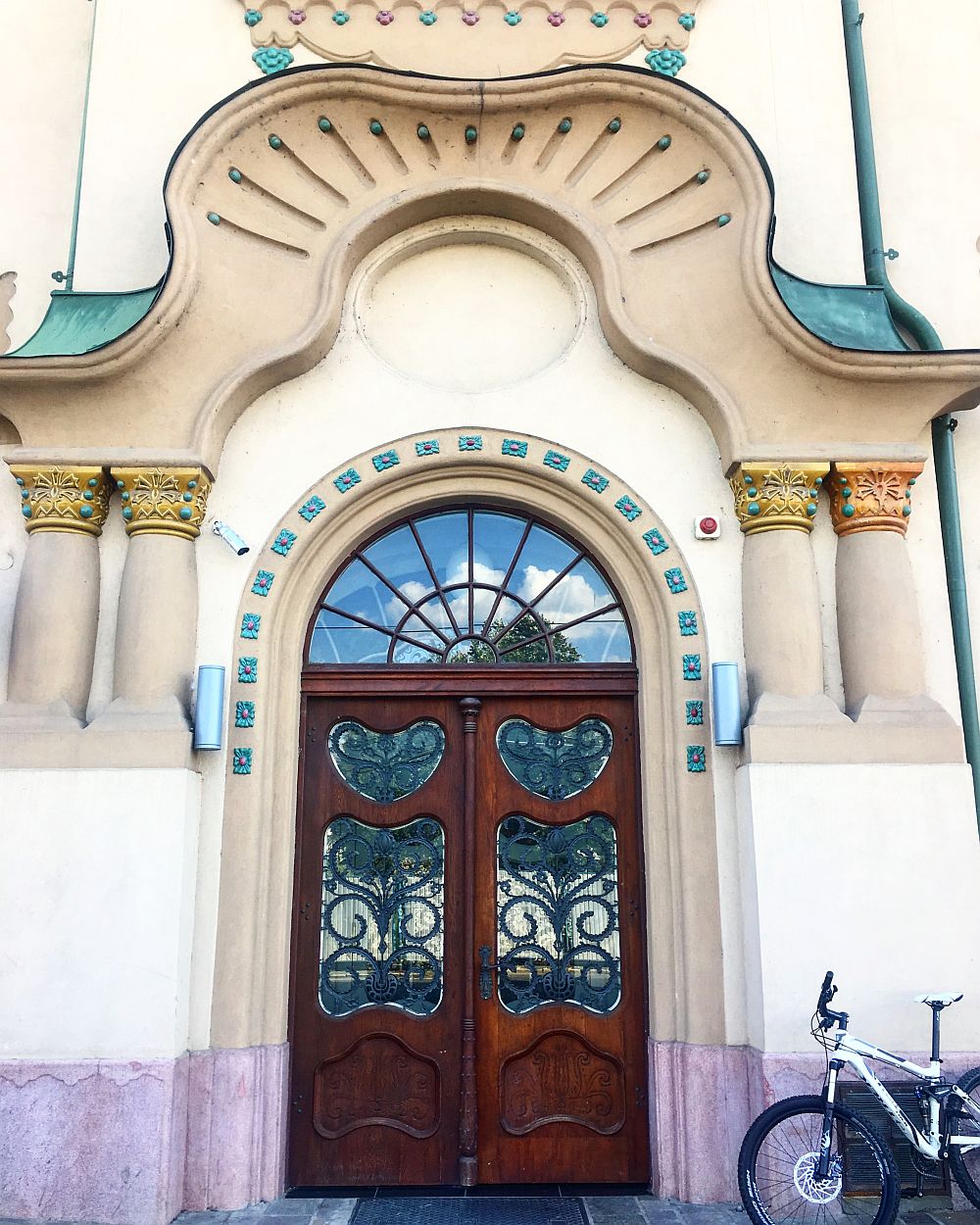
Piata Unirii – gazduieste Palatul si Turnul Primariei (Turnul cu Ceas, ce se poate vizita, iar de acolo sus centrul orasului se vede panoramic), construite in stil eclectic 1903. Langa primarie este alta cladire splendida: Palatul Episcopal Greco-Catolic, acelasi stil eclectic, construit pe amplasamentul vechii cladiri baroce din 1739, careia, in 1903, arhitectul Rimanóczy-junior ii adauga multiple elemente decorative romanice şi bizantine. Vizavi se afla Biserica cu Luna (1784-1832), construita in stil baroc, care in turnul cu orologiu are un mecanism ce indica fazele lunii.
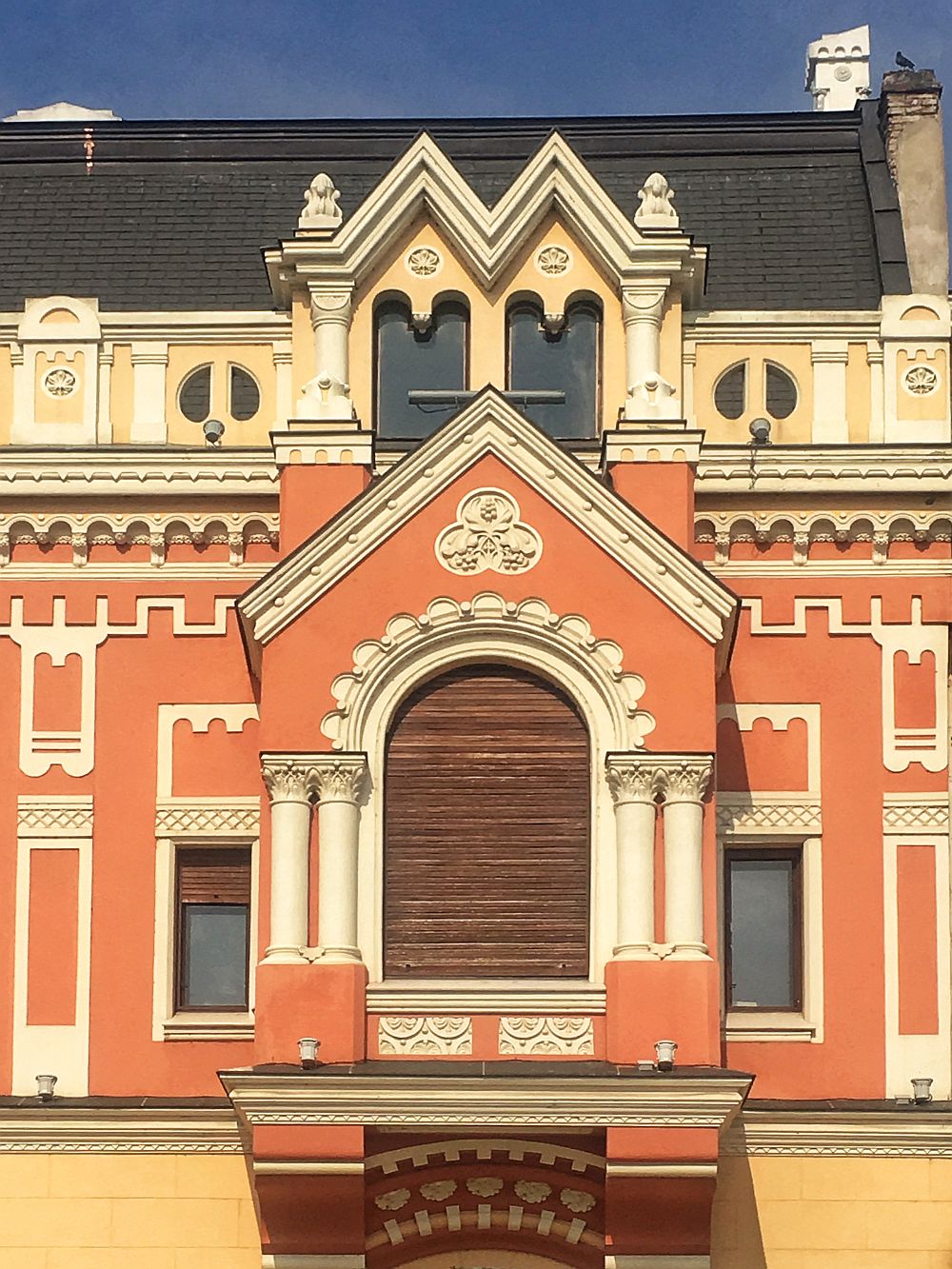
Detaliu – Palatul Episcopal Greco-Catolic

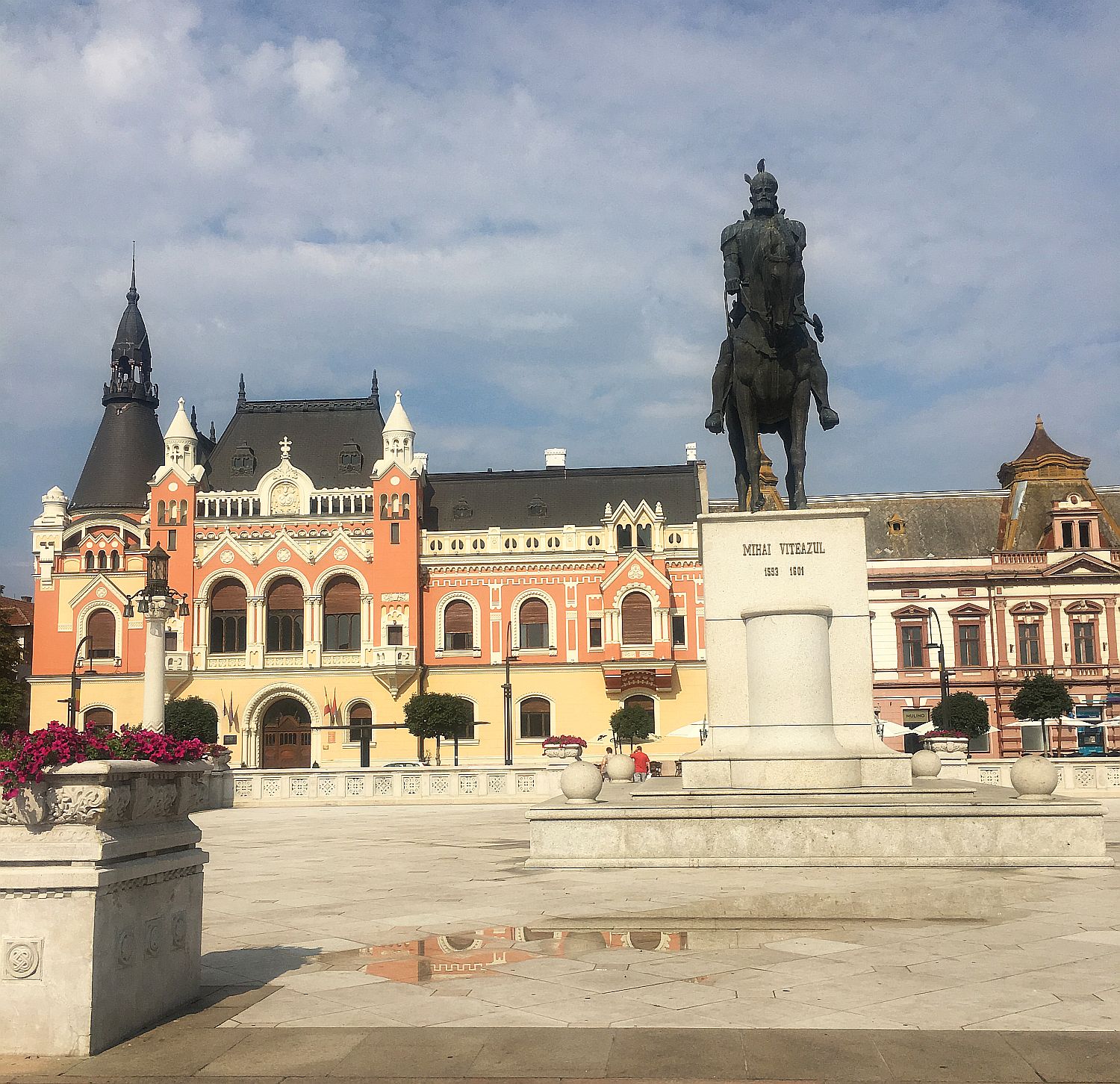


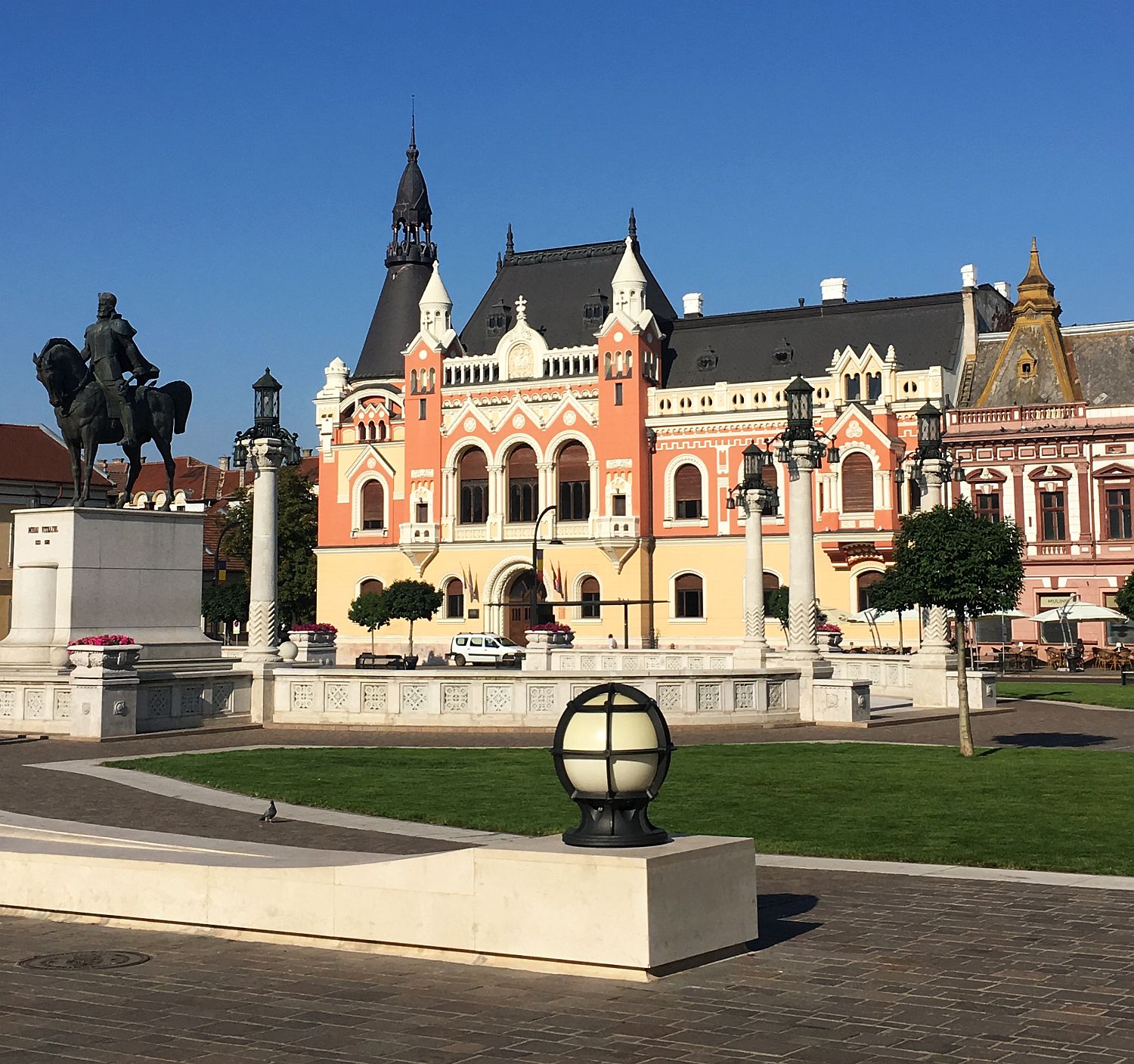
Cetatea Oradea – am ajuns la cetate in 25 de minute de plimbare de la hotel, prin parcul din centru si recunosc ca nu ma asteptam sa-mi placa atat de mult. Dateaza din secolul XII si este o combinatie de stiluri arhitectonice romanice, gotice, renascentiste si baroce. Zidurile vechi si groase pastreaza istorie de aproape 1.000 de ani, cetatea fiind leagănul si nucleul de dezvoltare a ceea ce a fost cunoscut ca “Oradea Mare”, concentrand aici funcţiile politice, militare, administrative, juridice şi religioase ale zonei. Legenda spune ca Regele Ladislau I (1077-1095) se afla la vanatoare pe teritoriul Oradei de azi, si obosit fiind, a adormit, iar in vis un inger i-a spus sa construiasca o manastire in acel loc.

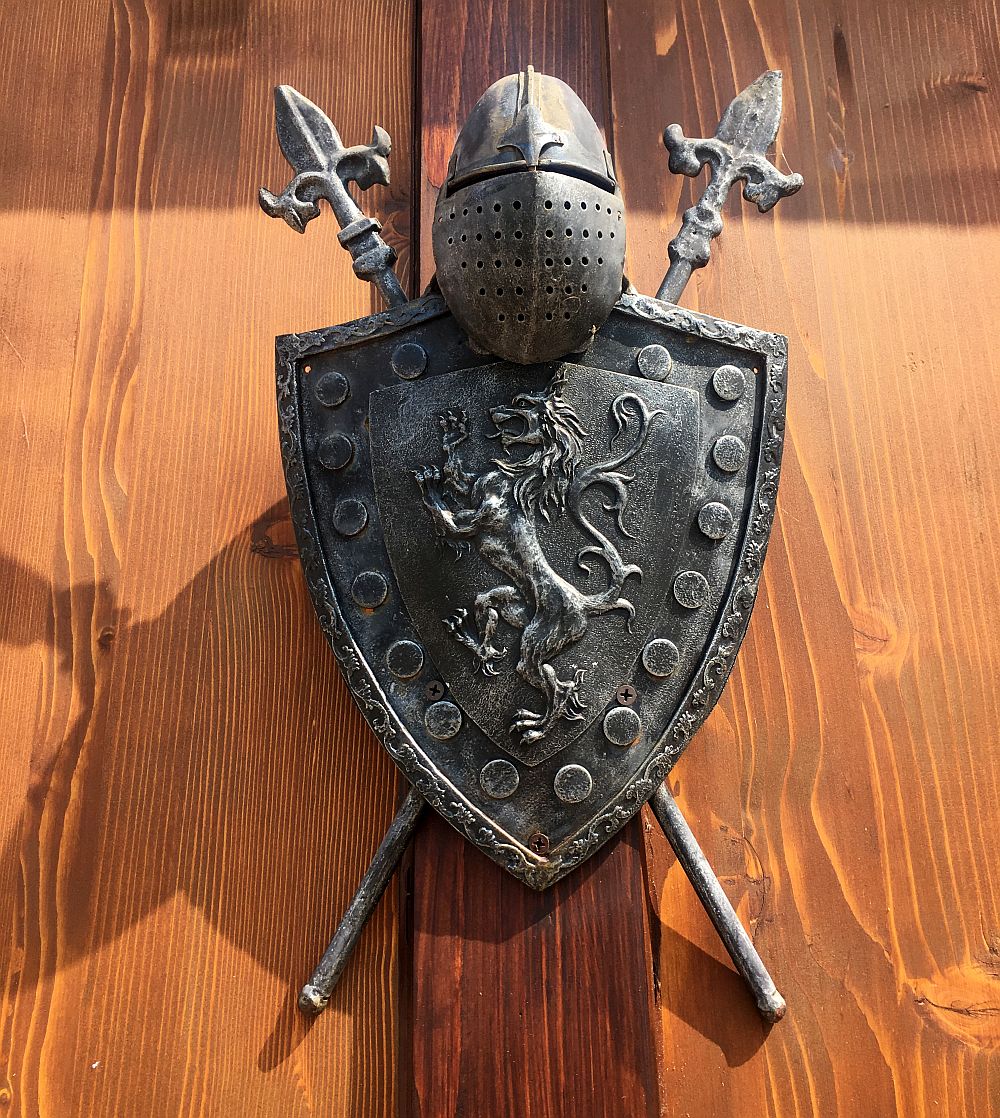
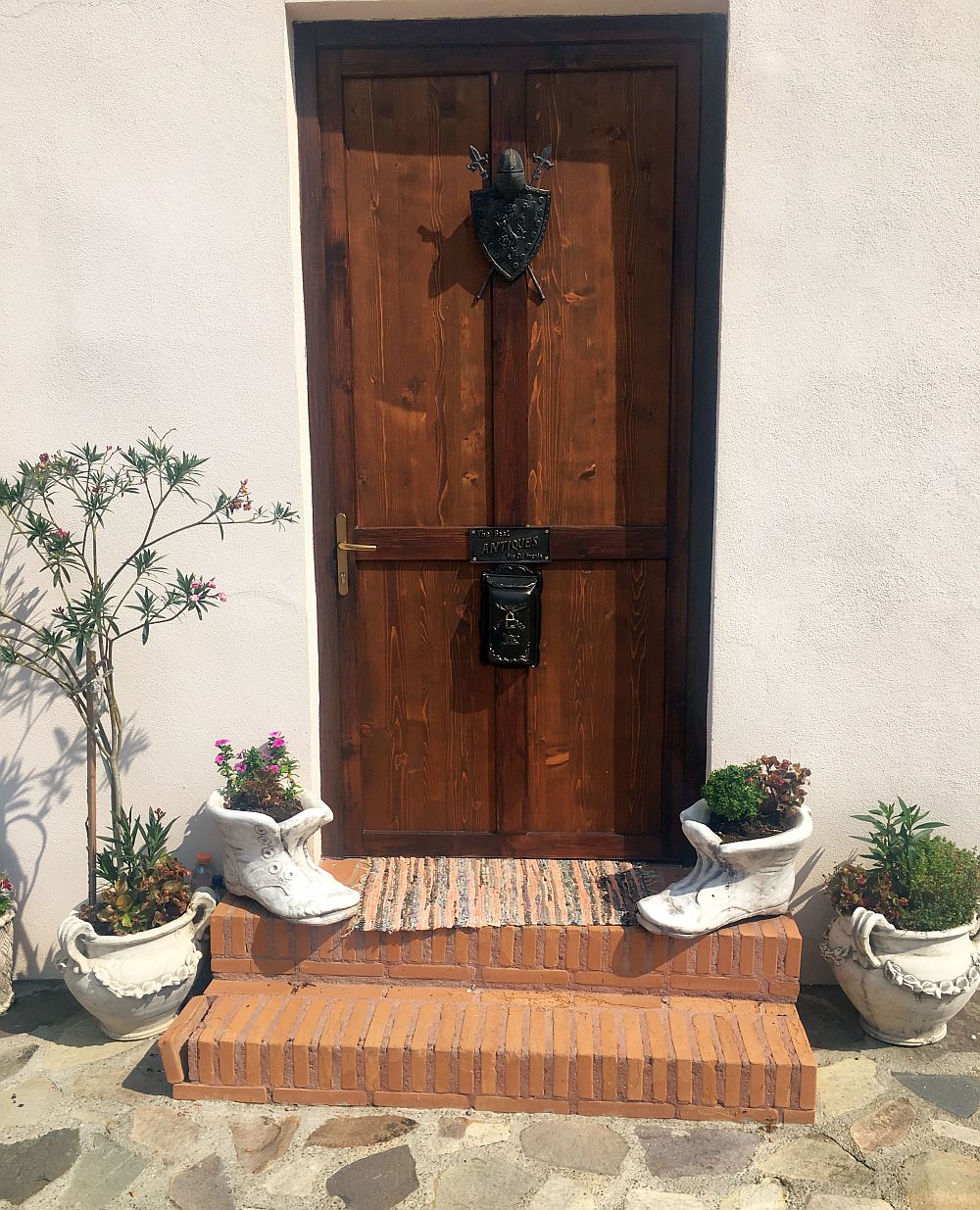


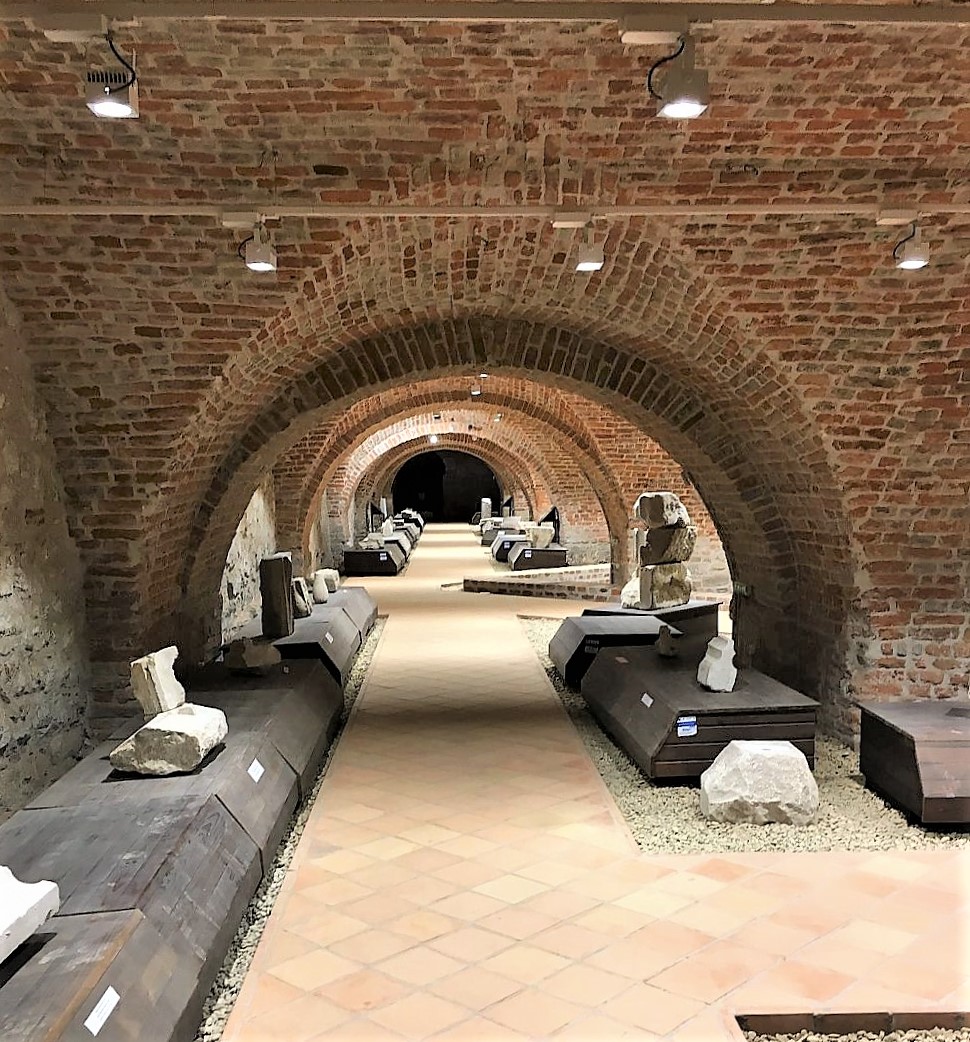
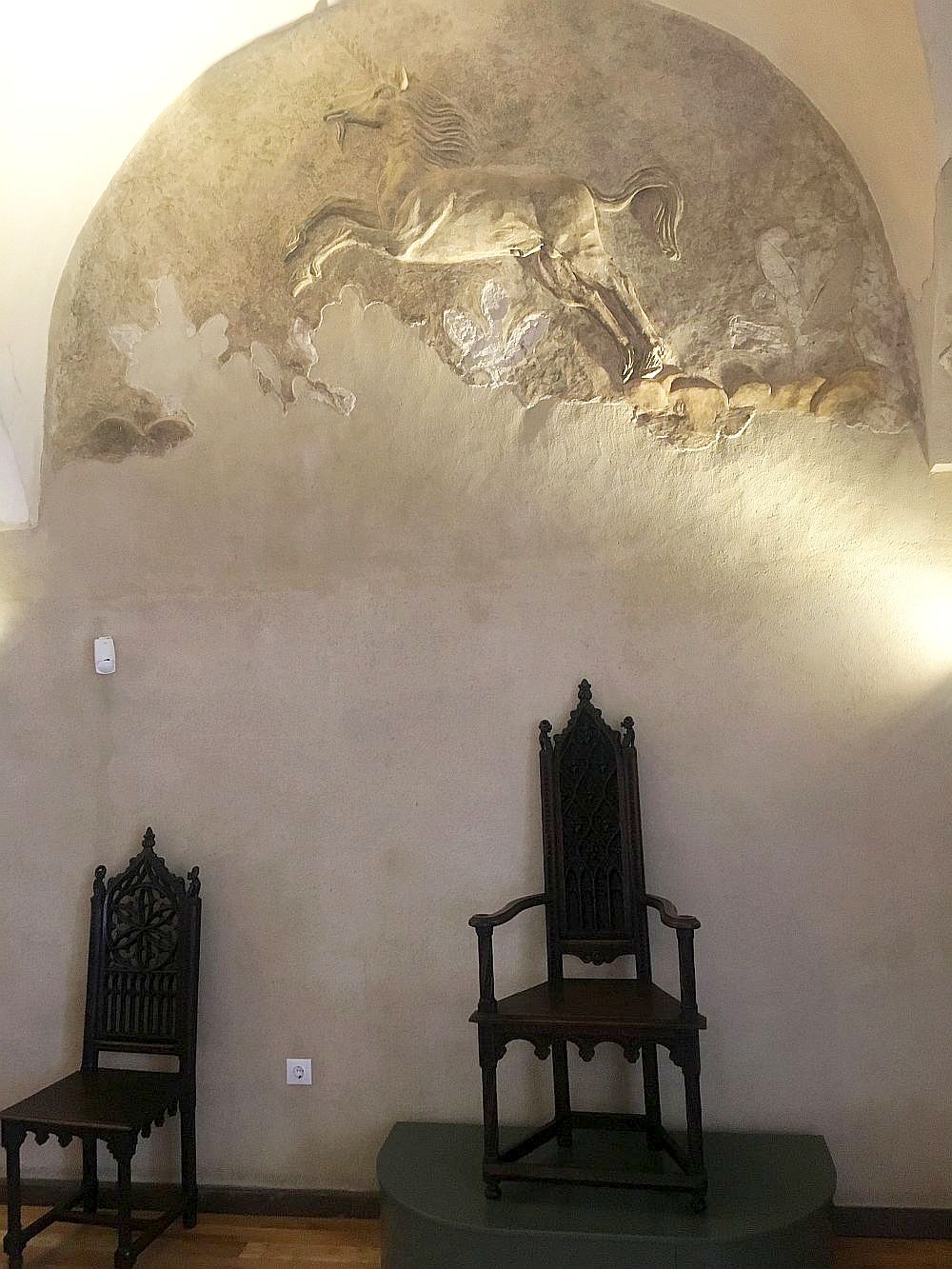
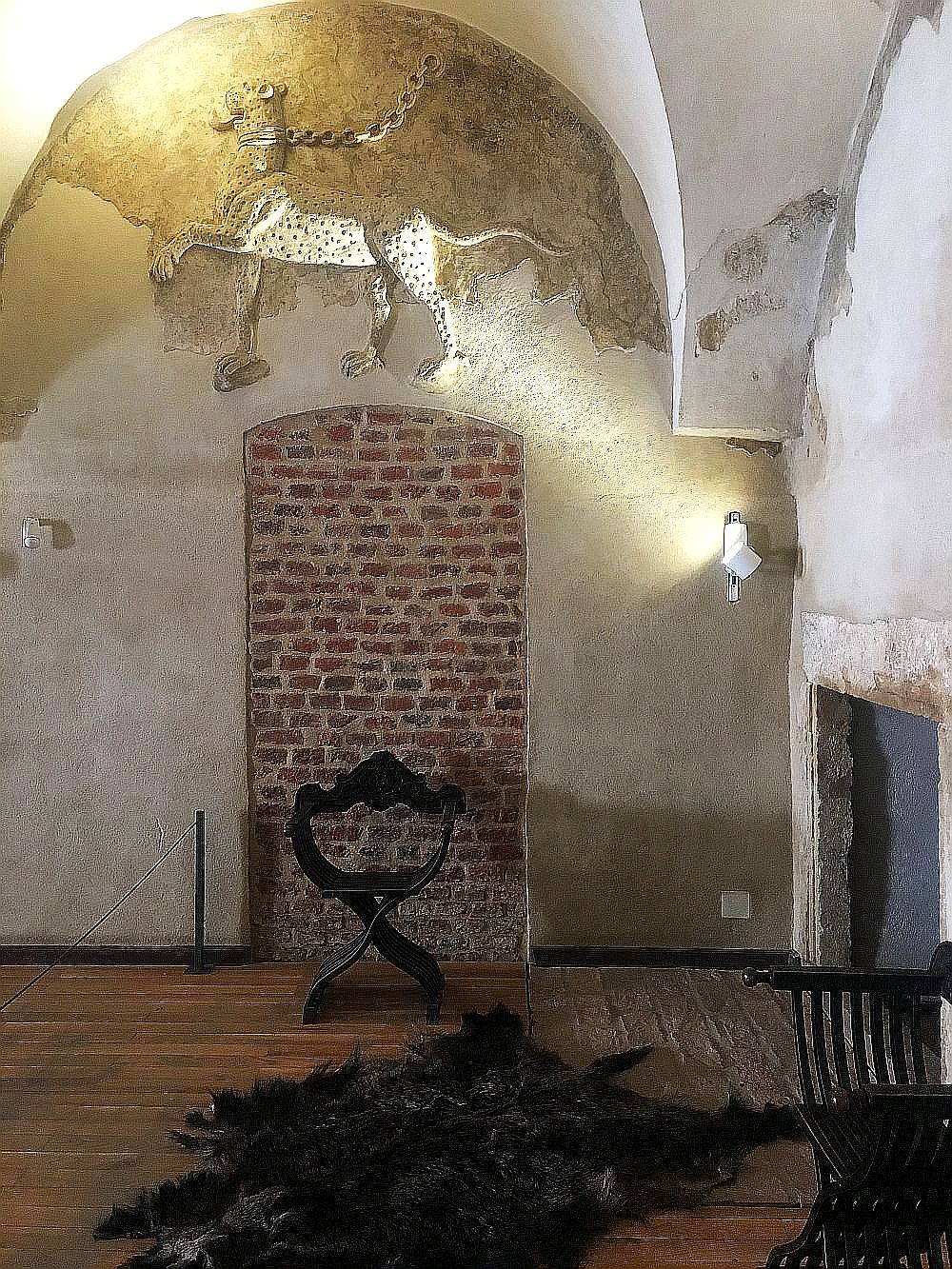
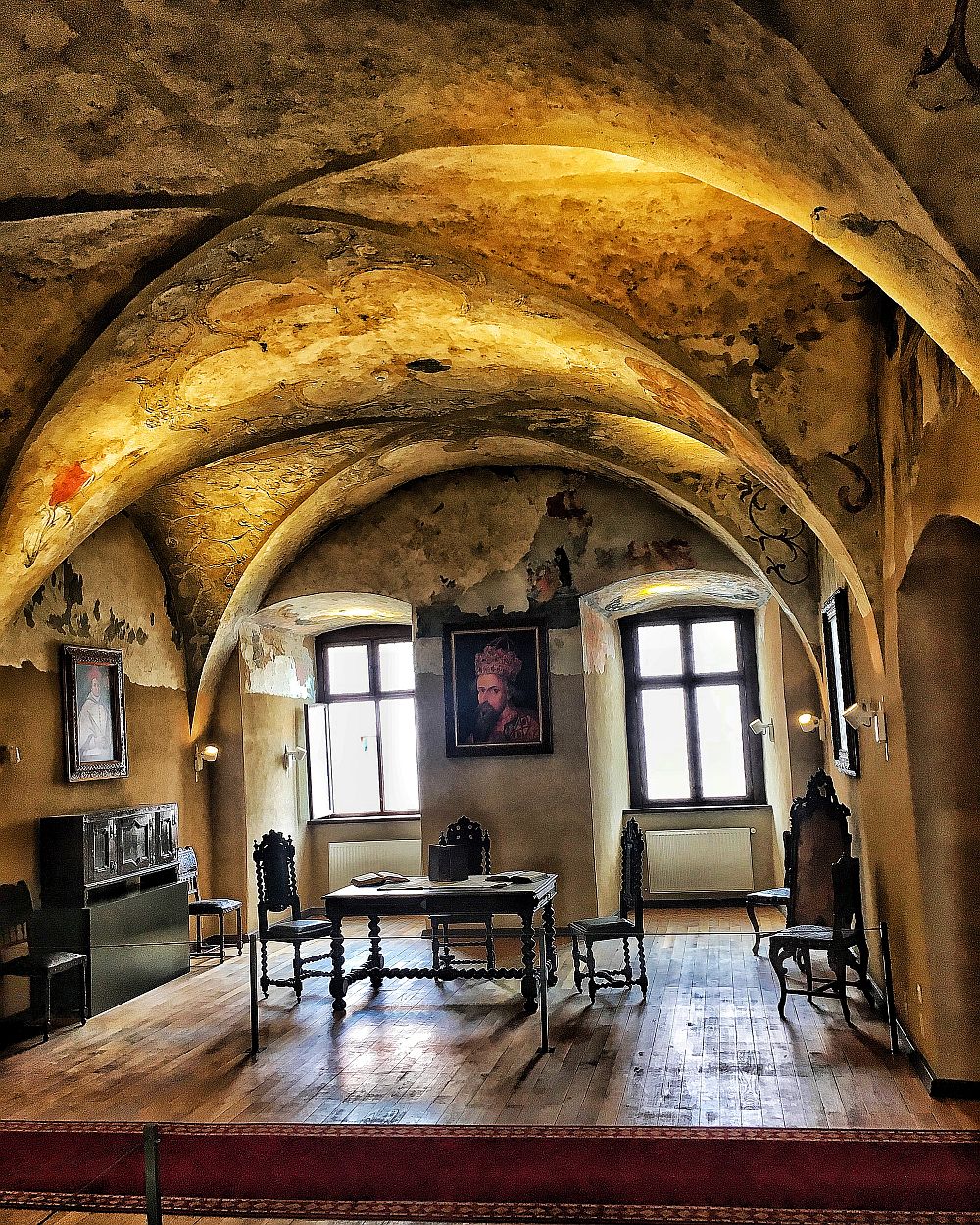
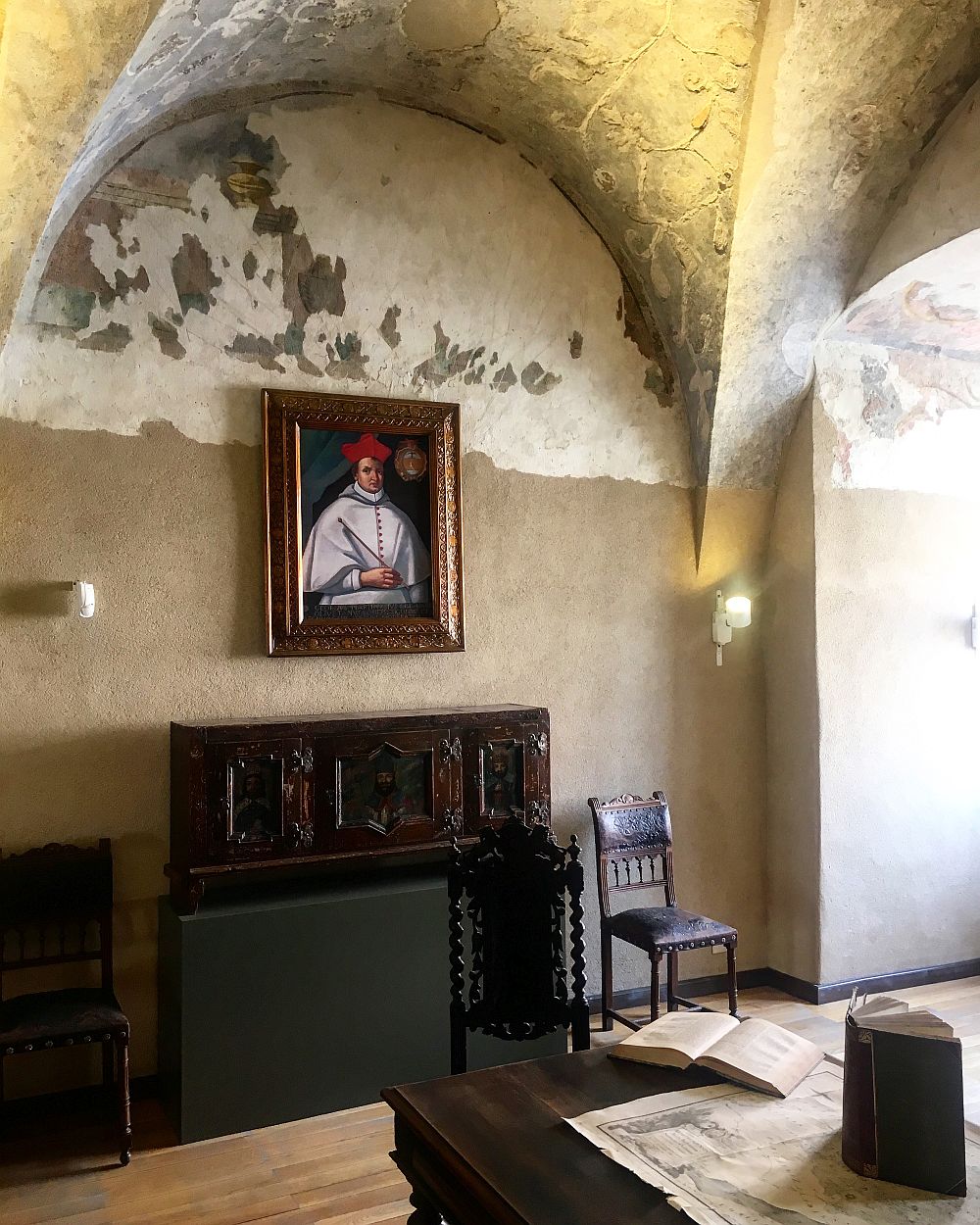
Oradea este un oras cosmopolit si multicultural, care pe langa zecile de monumente istorice si culturale, emblematice pentru diverse stiluri arhitecturale, are o energie foarte buna, este relaxant si linistit, cu accente de modernitate si civilizatie contemporana. Cred ca aceasta energie este de fapt un bun simt nativ al locurilor si oamenilor, care respecta in mod firesc istoria si o traiesc zilnic, in peisajul unuia dintre cele mai frumoase orase ale Europei.
Da, in mod sigur Oradea este o destinatie de #BestCityBreaks
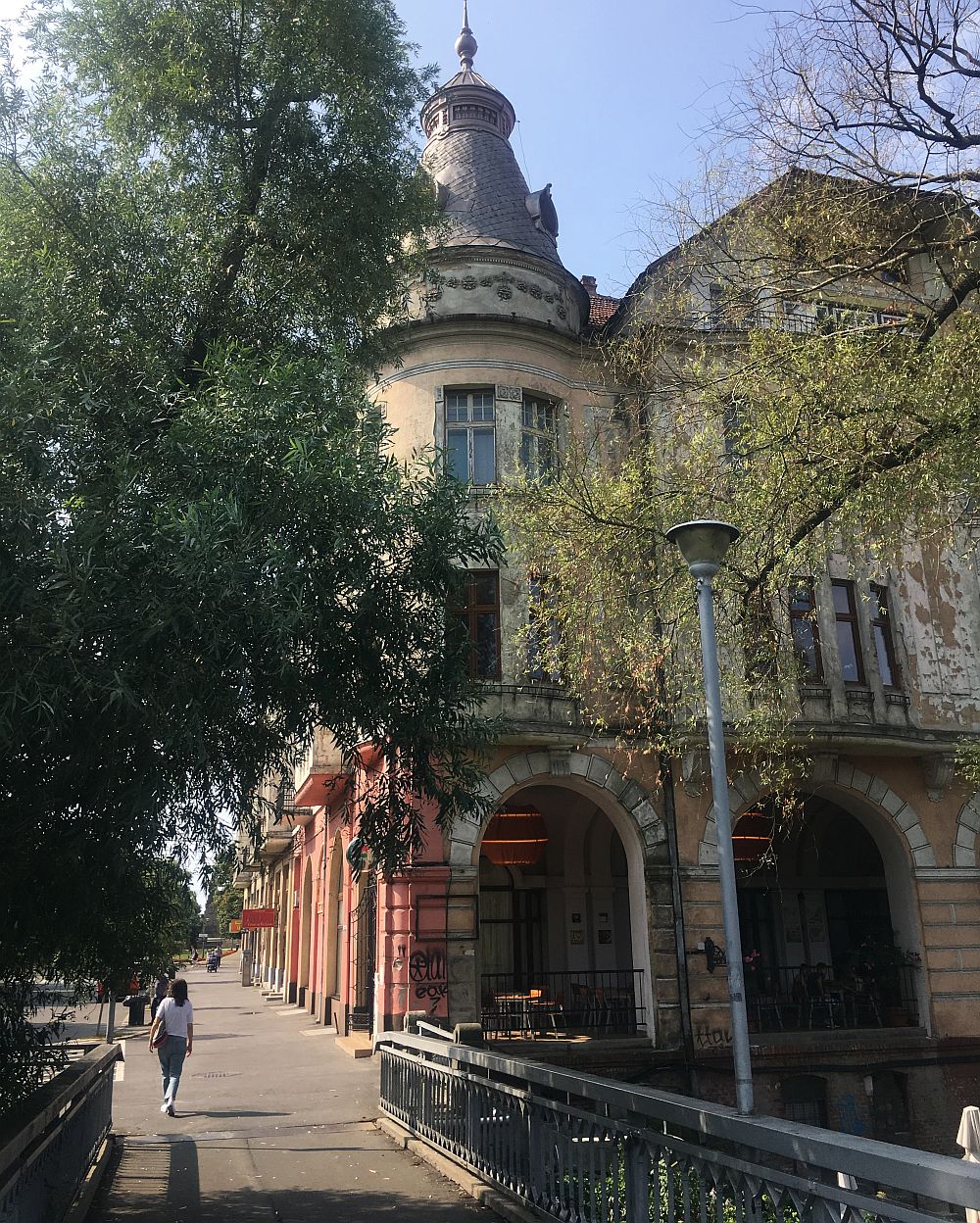

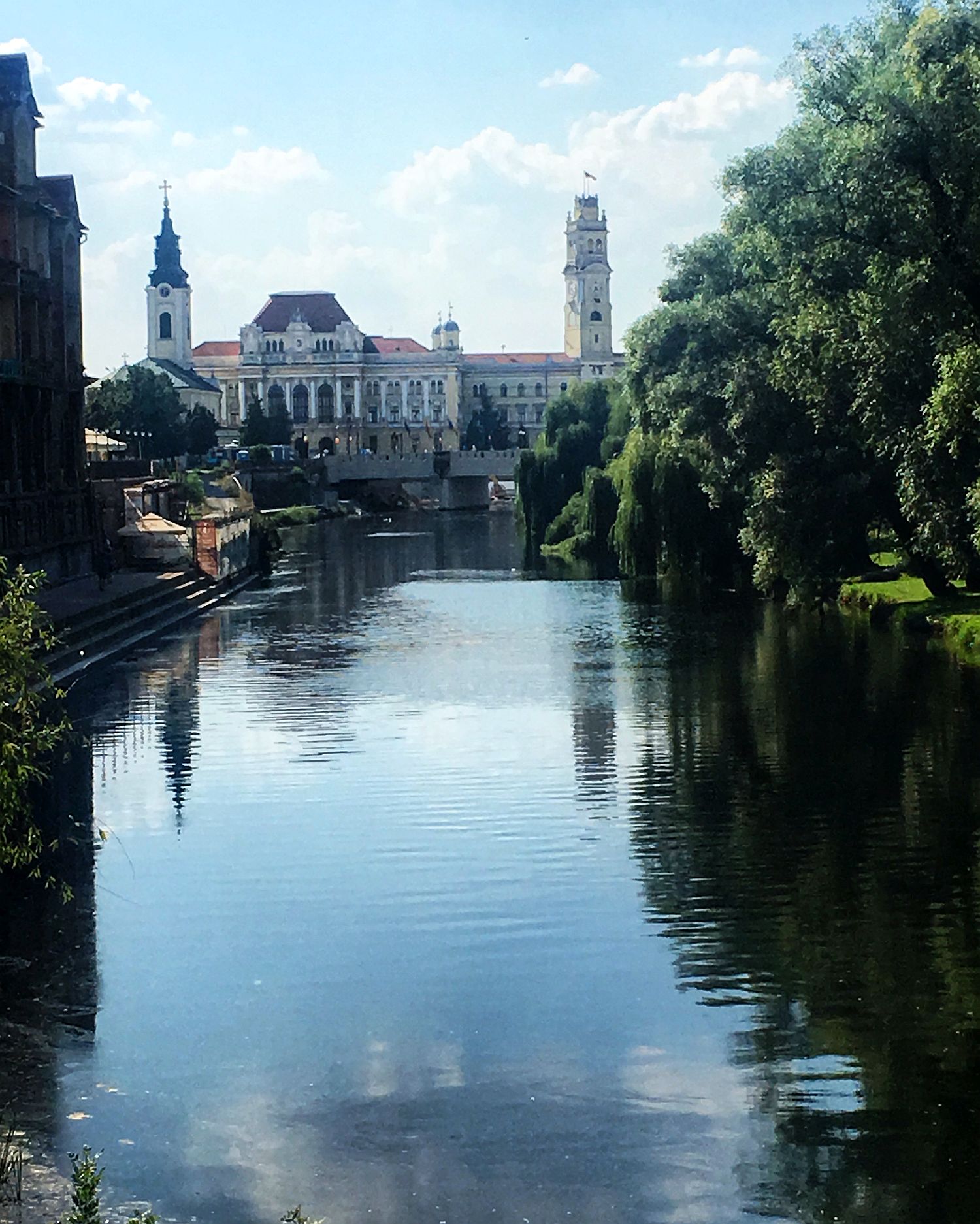
English version text:
This summer I arrived for the very first time in Oradea, I had never been here before, but I wanted it for a few years, especially since I started to see Instagram gorgeous pictures of the city.
I like the old houses; I like to discover the details of the architecture, the columns, and the sculptures sculpted in the walls or the ornaments that adorn them, on the walls or on the roofs. I think I can write a little story about the lace in the sheet of a roof or the old wooden doors placed beautifully under surprising archways.
Often when I’m overwhelmed by stress, I walk out the streets with old and beautiful houses. It relaxes me, and admiring them, I am charging myself with the fantastic and positive energy of over a hundred years old walls, which, in this world of forms without foundation, are solid landmarks of creativity, passion, work, imagination, they have built them. Passion feels and stays in eternity.
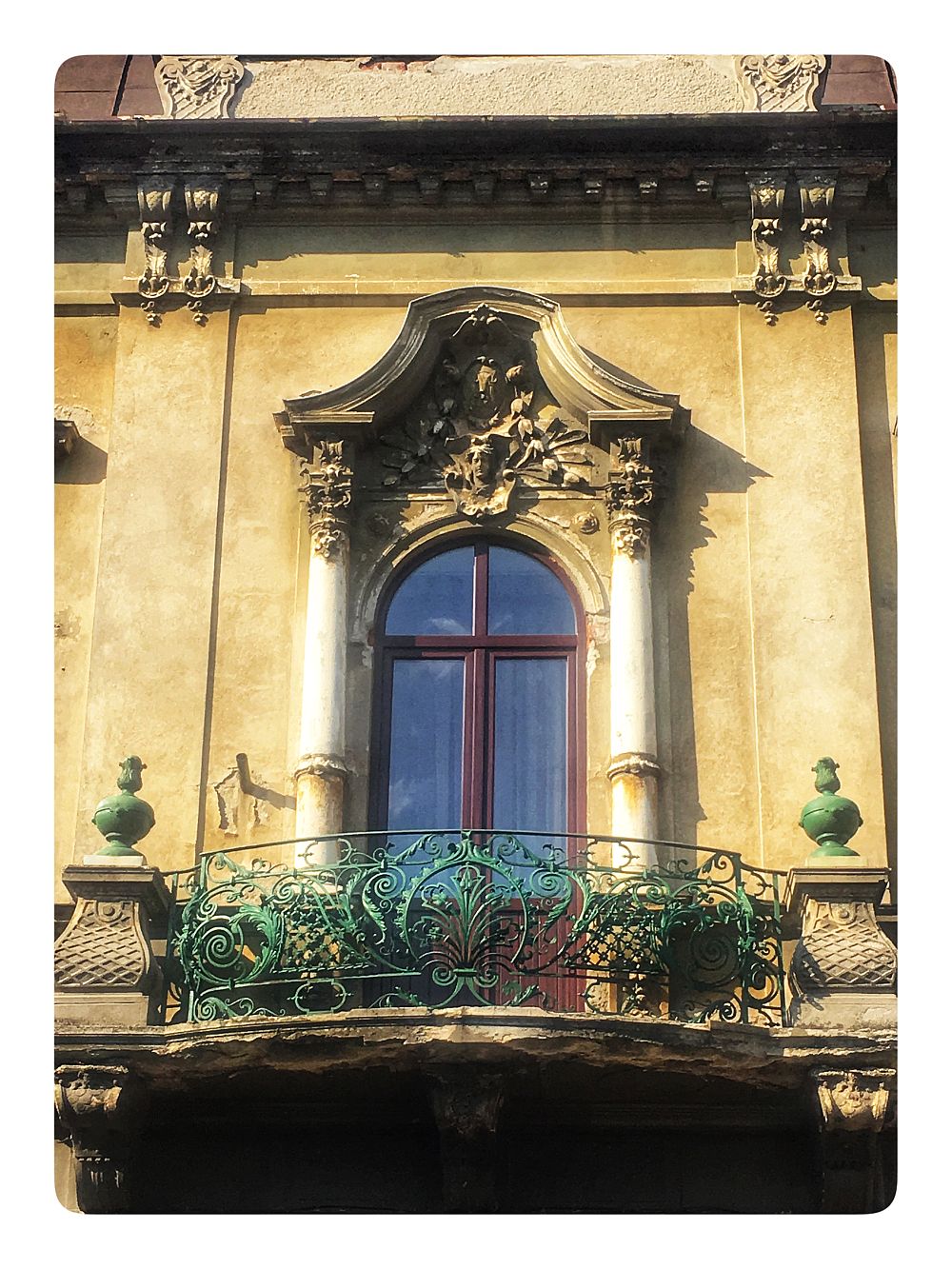
That being said, you will understand why in Oradea I chose to stay in an old hotel, full of history and located in the old center, namely Astoria, that has about 115 years and is oriented to King Ferdinand Square. The rooms are splendid and large with furniture and classic décor, and the price is less than in other hotels in areas further away from the center, built with rigips and glass structures such as office buildings. I also liked the fact that, being close to Unirii Square, I heard from the hotel room Iancu’s March, broadcast from the Town Hall to every fixed hour. I did not take breakfast at the hotel, just to try out every day a different café or bistro from the surroundings within a few minutes’ walk. I found places with ingenious scenery, aromatic coffee and good food.
Oradea is a jewel town with a surprising architectural landscape full of spectacular Art Nouveau-style buildings with Secession, Baroque and Eclectic influences that surround green spaces and parks. After the first 10 minutes of walking through the old center, I was thinking that could be enlightened in the curriculum of the Faculty of Architecture, as a stage of architectural and design practice, through the fantastic mix of extremely harmonious stylistic influences, show it every step. Proof, including Oradea in the Art Nouveau international network, alongside Barcelona, Brussels, Nancy or Vienna, which certified the architectural treasure of European value.

The architectural ensemble of the pedestrian center can be regarded as an eloquent historical site for the wealth of artistic information from the beginning of the 20th century. The façades associate romantic, Gothic, Renaissance elements with decorative forms of vegetal, zoomorphic or anthropomorphic inspiration. Columns, consoles, altars, torsade girdles, caps, balustrades, geometric or floral motifs, make up a sumptuous decor specific to the eclectic and Art Nouveau style from around 1900.

Sinagoga Ortodoxa – eclectic style, since 1890
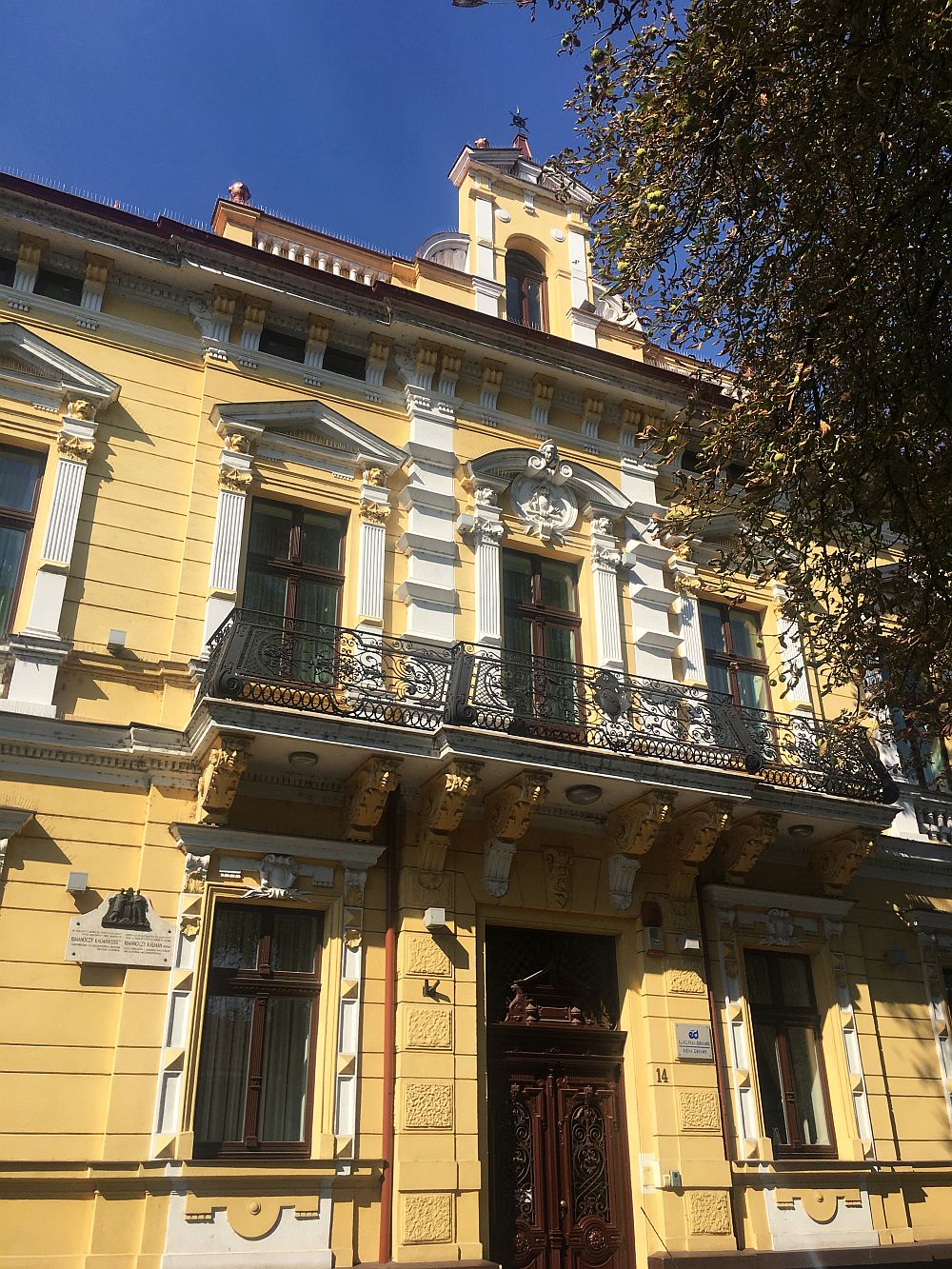
Here are some important milestones I’ve found in this open-air architectural city:
Regina Maria Theater – located in Piata Ferdinand, a monument of emblematic architecture and one of the most successful examples of the Oradean eclecticism, was built between 1899 and 1900 by the architect Rimanóczy Kálmán Junior, following a project by Fellner and Helmer (Vienna). The façades bear the neoclassic footprint, with neo-Renaissance elements, while the interior is neo-baroque, which imparts an intimate and soothing atmosphere. Also noteworthy are the two allegorical statues in front of the Theater, representing Drama and Comedy.
Rimanoczy Senior Palace – located on Republicii Street, built in 1905, reproduces, on a small scale and in an orginalized, simplified way, the Cá D’Oro Palace in Venice. The building has a tall partner, two floors, a corner tower with curved windows and two fronts in a semicircular arch on the main face. The architect manages to harmoniously combine eclectic style with influences of Gothic-Venetian style.
Stern Palace – is also on Republicii Street in the Old Center and dates back to 1905, a large 3-sided building on the corner with a Lechnerian-style façade. It is colorful as a sweet gingerbread house, the decorative motifs being taken from folk art, from fabrics or from the decor of painted boxes, and the ironwork in the gaps of the wooden gates shows the peacock tail stylized.
The imposing and blue Moskovits Palace, an absolute landmark of the pedestrian center, is impossible to go unnoticed and especially without being admired for a longtime. The edifice of overflowing beauty and complexity is one of the most eloquent examples of Secession style in its various expression modes. Vegetable ornaments create a special lace, the central motif of the apse (the semi-circular central niche) being a goddess who gracefully raises her head from a bunch of branches, leaves and flowers.
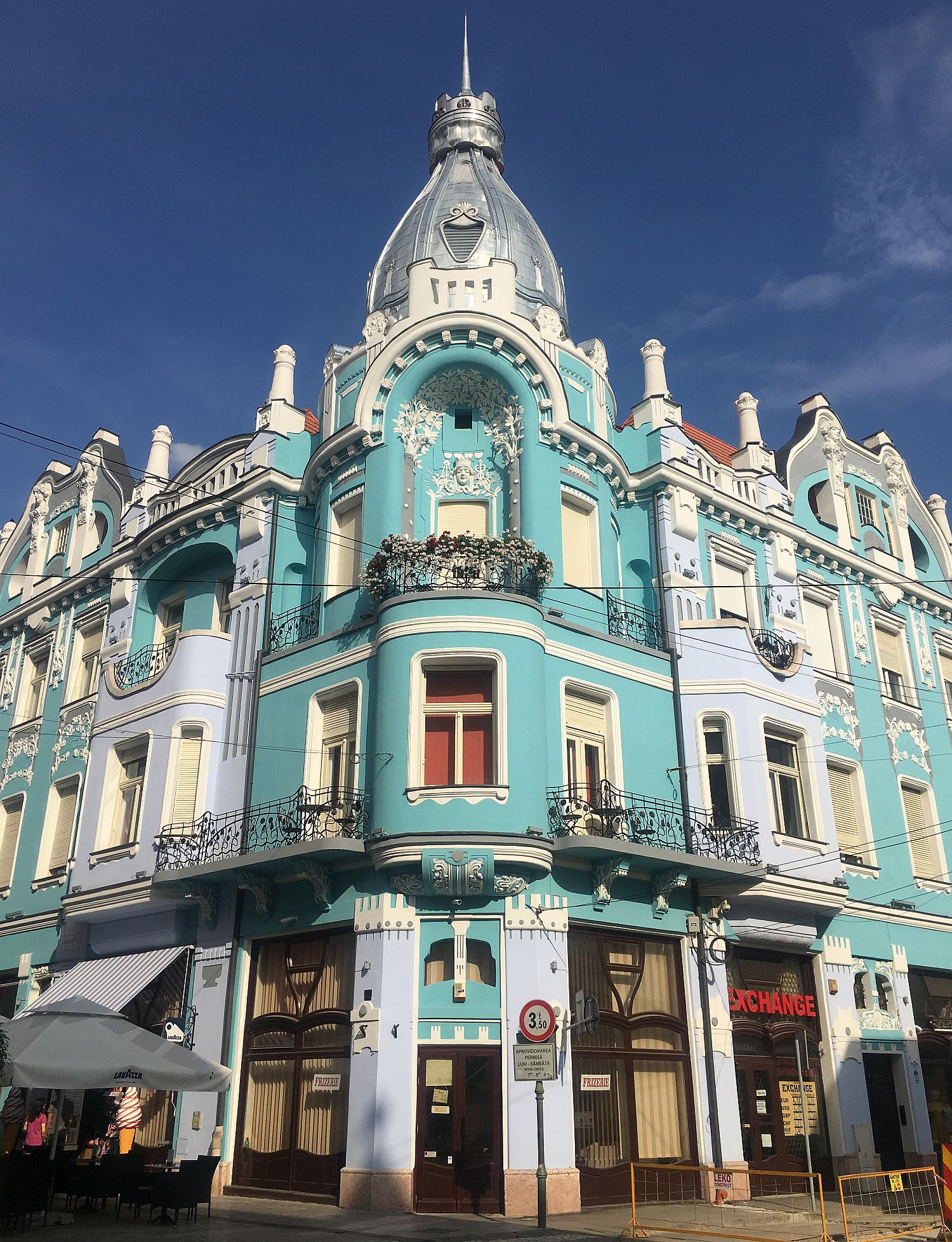
The Roman-Catholic Church “The Holy Spirit” has a Baroque architecture, being a former monastery of the Franciscan monks of 1787, consolidated and rebuilt over time, one of the highlights being the 53-meter high tower. The building is gorgeous and surrounded by a lush garden, out of which, on the side of the Republic Street, there is a Pieta statue. The combination of architecture and rich vegetation here seems absolutely splendid and unprecedented.
Adorjan I House – is behind the theater, on a side street, and immediately I thought on Gaudi’s through the corrugated lines of the facade, although it belongs to the same Secession style, but has many ornamental details, some of the popular inspiration. Built in 1903, it is now a historic monument.
Black Eagle Palace – is located in PIata Unirii, monumental and very representative of the Secession architectural style, has an interior Y-shaped passage and 3 entrances. The dazzling avalanche of curved lines, the alternation of stucco-bas-reliefs with floral and figurative motifs, stained glasses and immense chandeliers are organized highly symmetrical composition. Built in 1907, the complex was to house a theater, several ballrooms, a casino, cafes and offices.
Unirii Square – it houses the Palace and the Town Hall Tower (the Clock Tower, which can be visited, and from there upwards the city center is panoramic) built in eclectic style 1903. Next to the town hall is another splendid building: The Greek Catholic Episcopal Palace, the same style eclectically, built on the site of the old baroque building in 1739, which in 1903, the architect Rimanóczy-junior adds to it many Romanesque and Byzantine decorative elements. Opposite is the Church with the Moon (1784-1832), built in the baroque style, which in the clock tower has a mechanism indicating the phases of the moon.
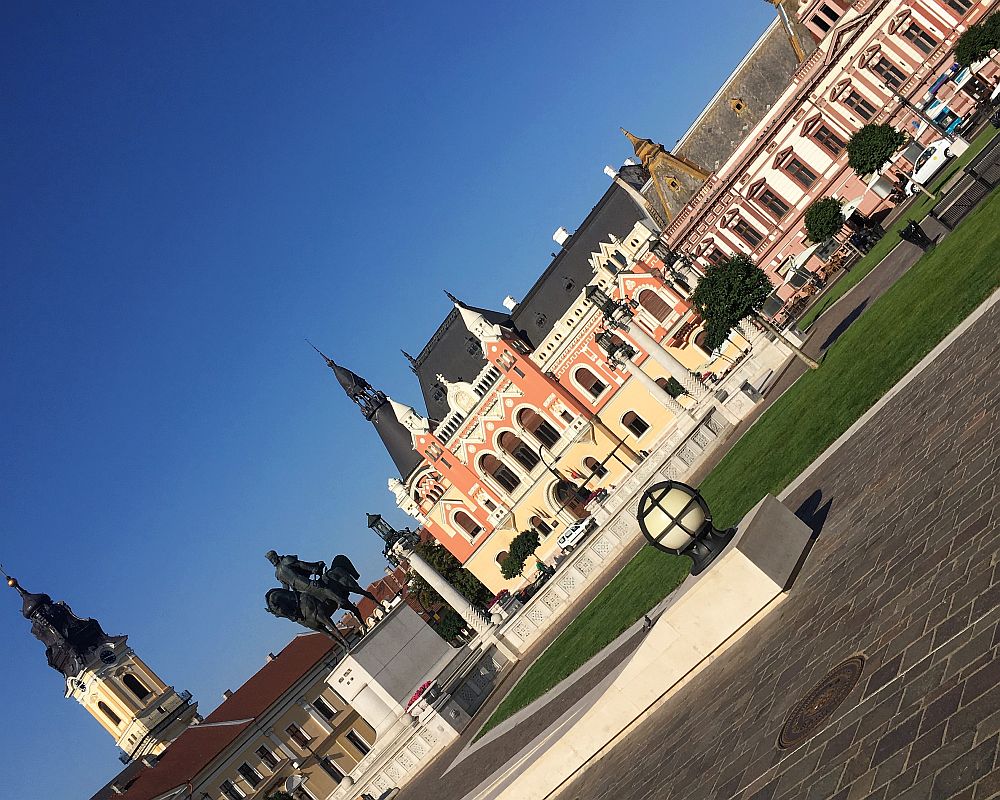
Oradea Fortress – I reached the fortress in 25 minutes walking from the hotel, through the park in the center and admit that I did not expect to like so much. It dates back to the 12th century and is a combination of Romantic, Gothic, Renaissance and Baroque architectural styles. The old and thick walls preserve history for nearly 1,000 years, the city being the cradle and nucleus of development of what was known as “Oradea Mare”, concentrating here the political, military, administrative, legal and religious functions of the area. Legend has it that King Ladislau I (1077-1095) was hunting on the territory of today’s Oradea, and tired he fell asleep, and in the dream an angel told him to build a monastery in that place.
Oradea is a cosmopolitan and multicultural city, which besides dozens of historical and cultural monuments, emblematic for various architectural styles, has a very good energy, it is relaxing and quiet, with accents of modernity and contemporary civilization. I believe that this energy is actually a native sense of the places and people who naturally respect history and live it daily in the landscape of one of the most beautiful cities in Europe.
Yes, certainly Oradea is a #BestCityBreaks destination
Photo credits: personal archive Ruxandra Chiurtu